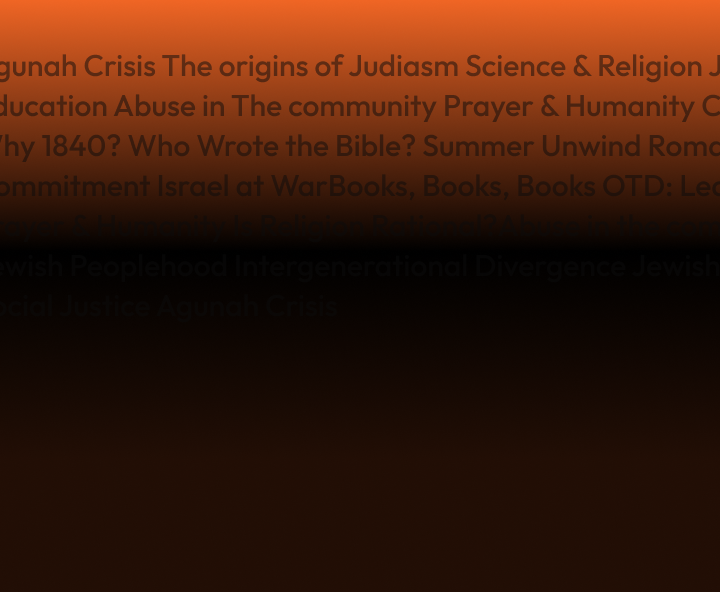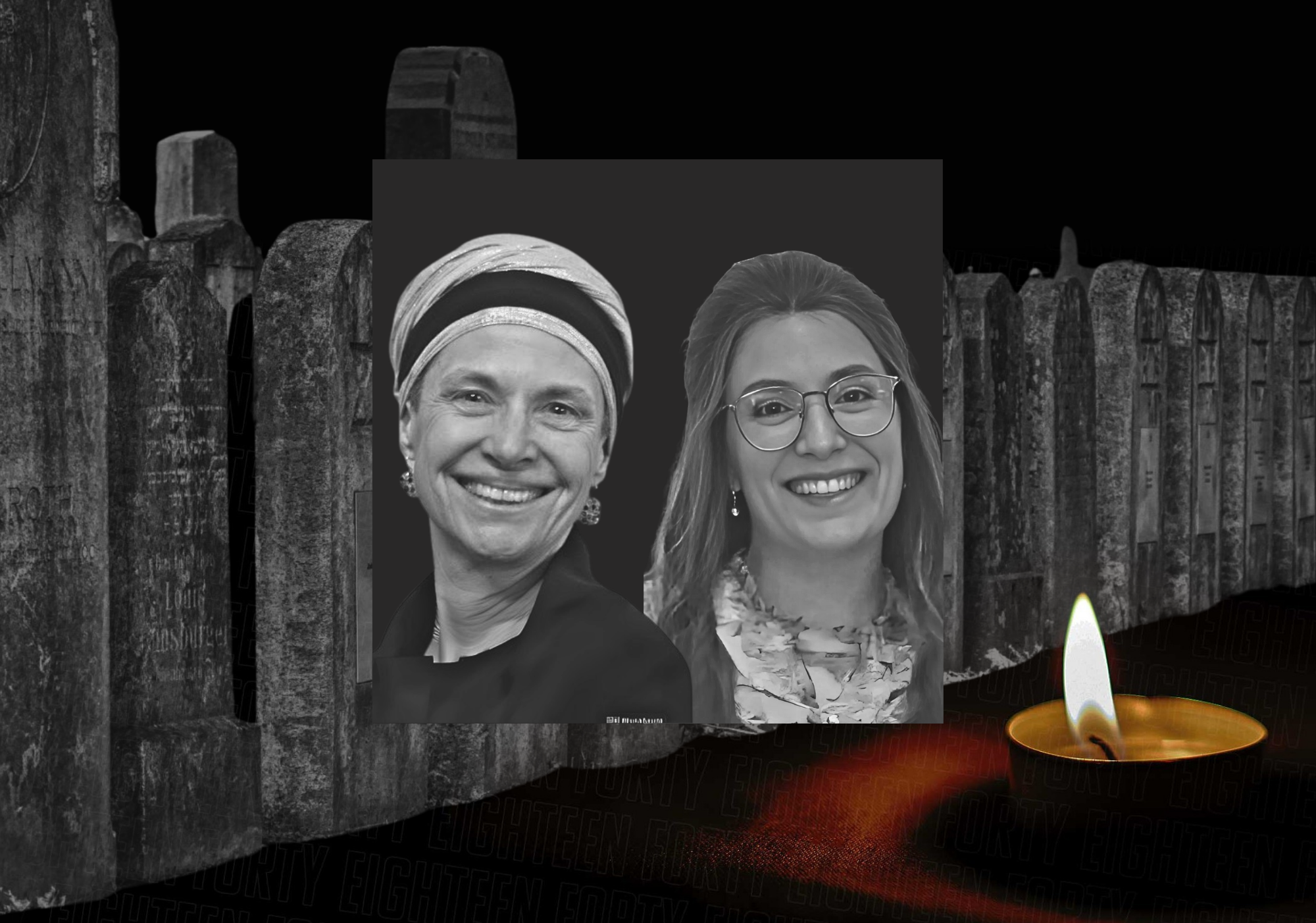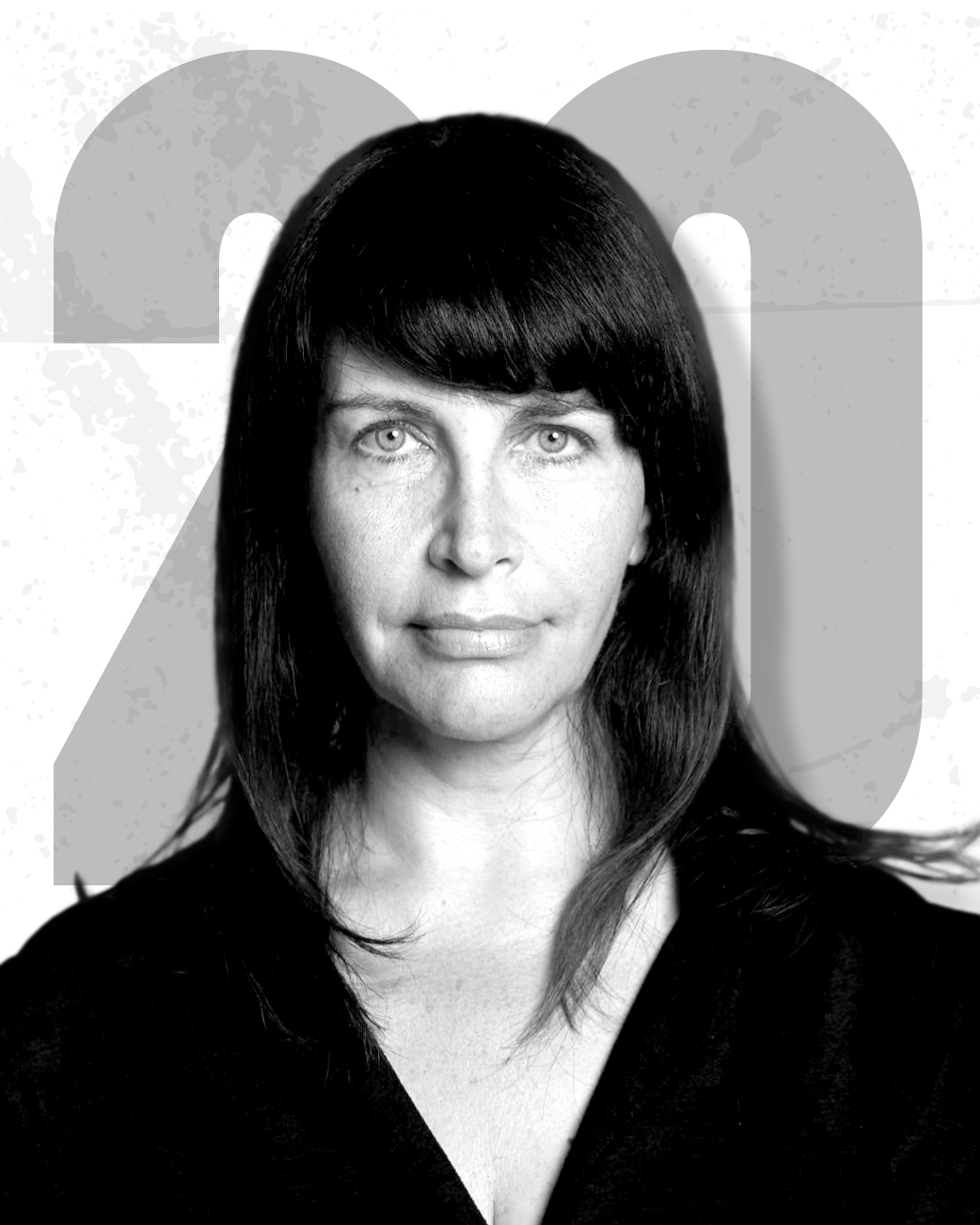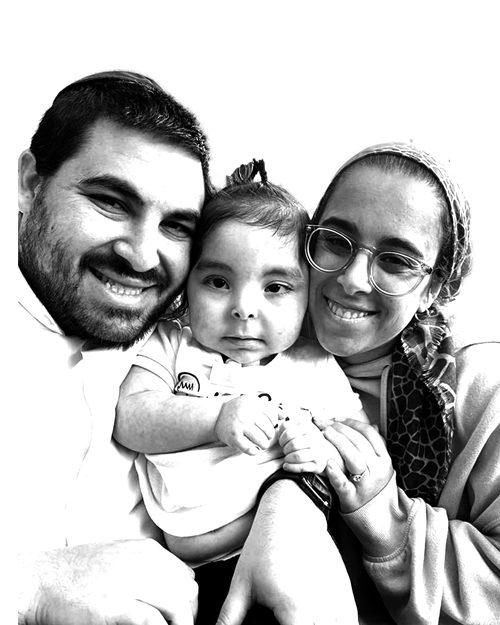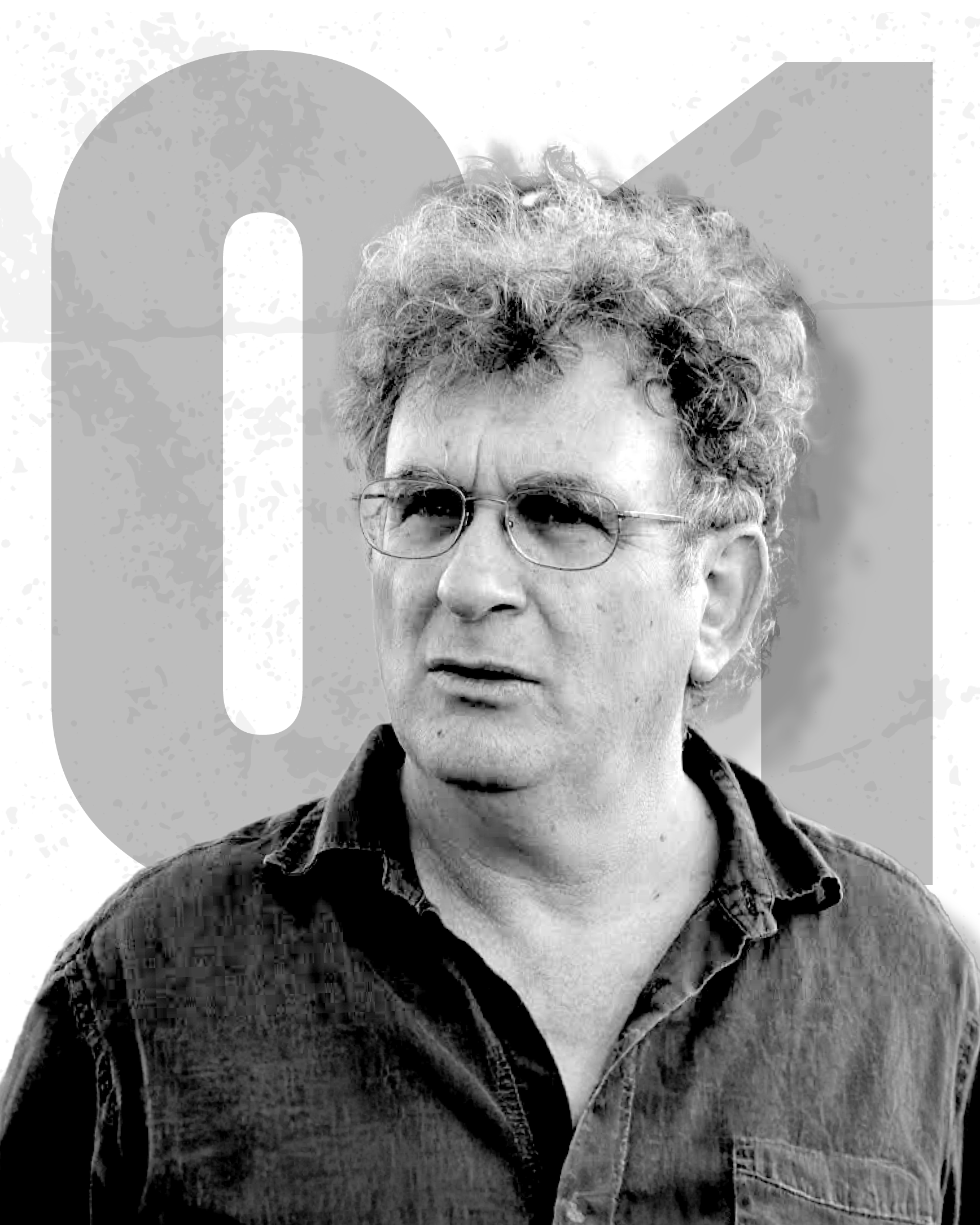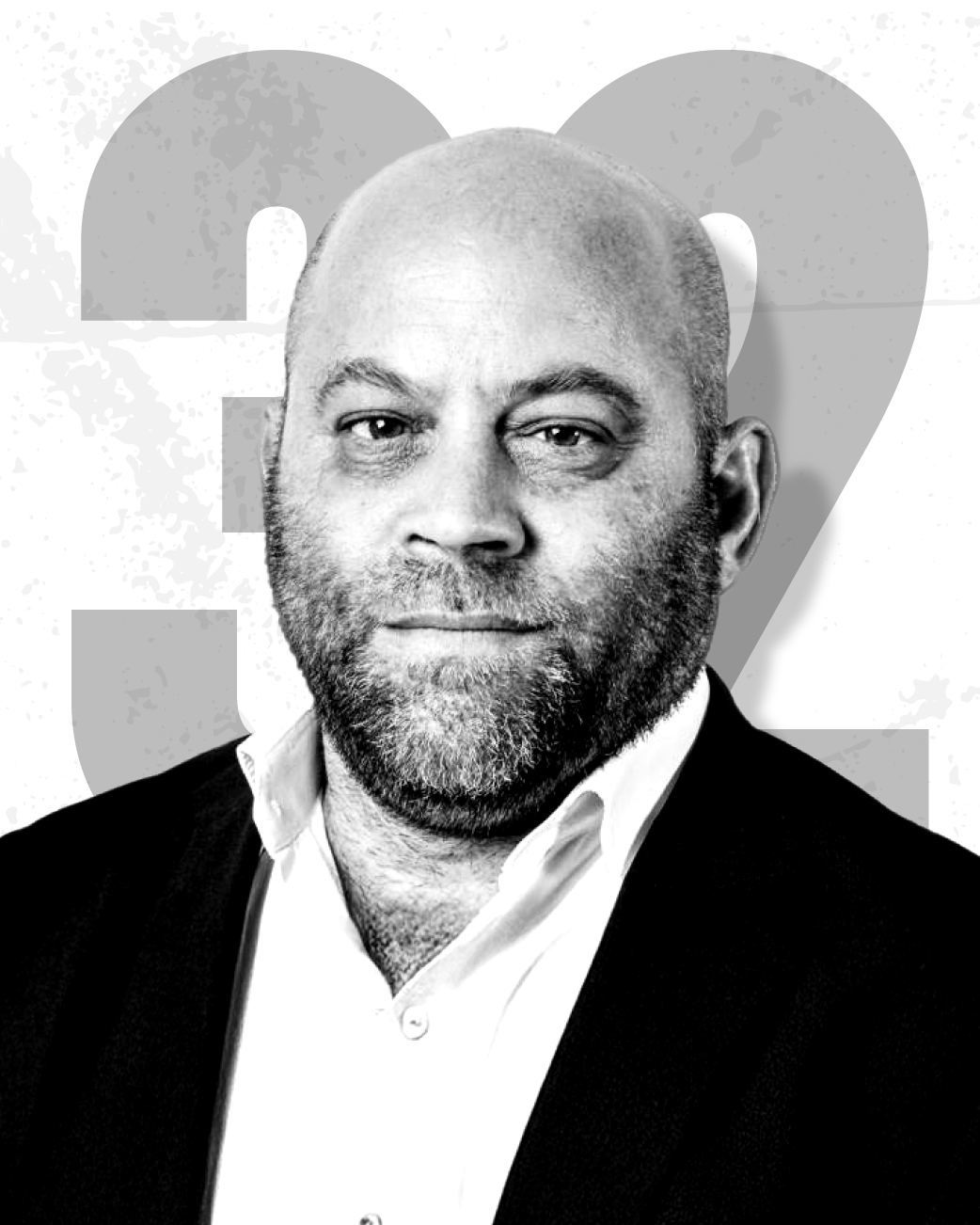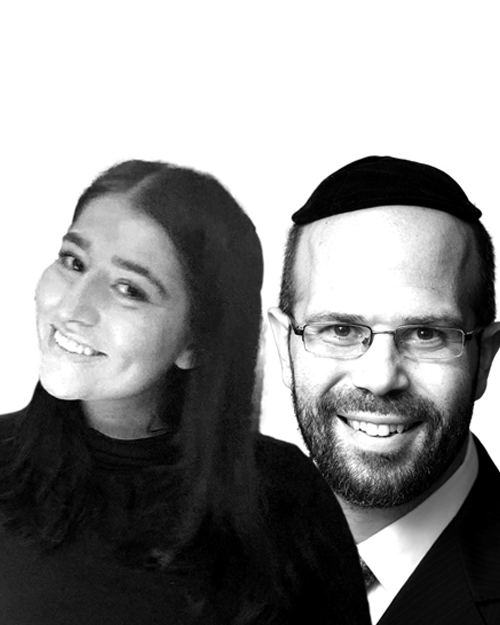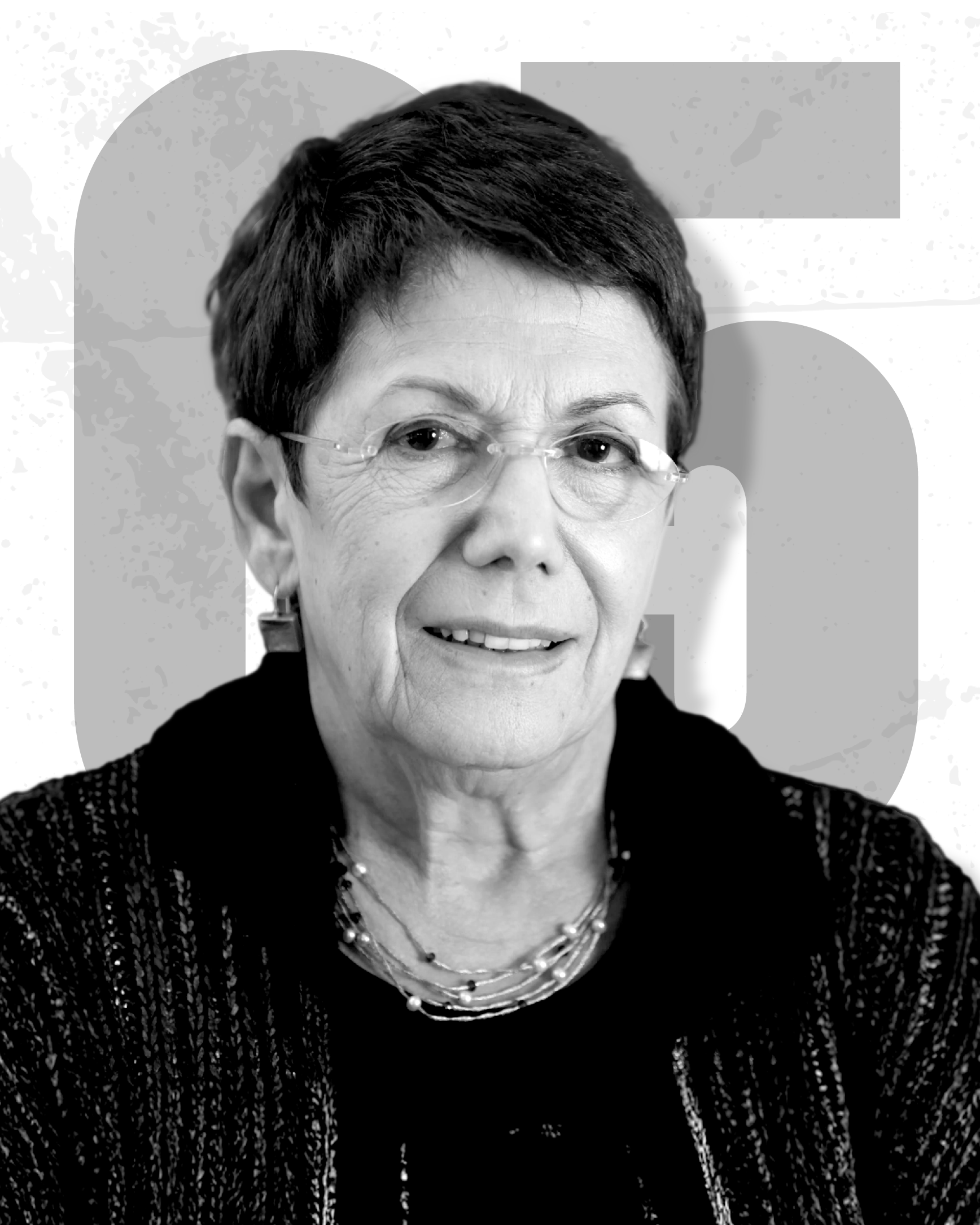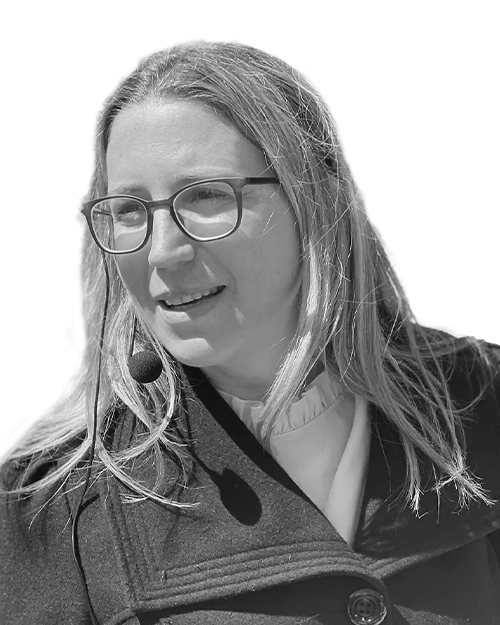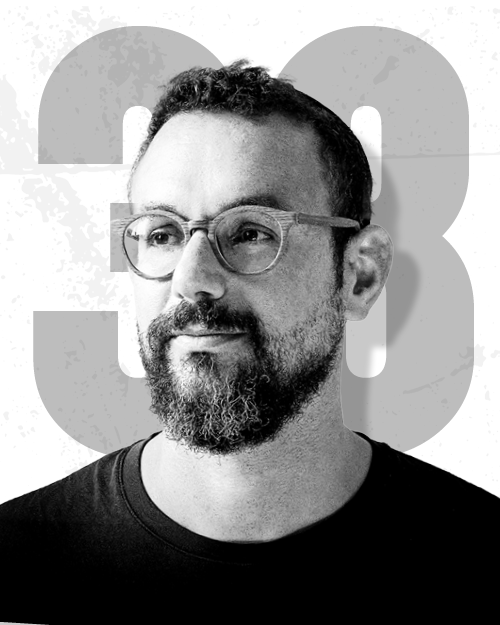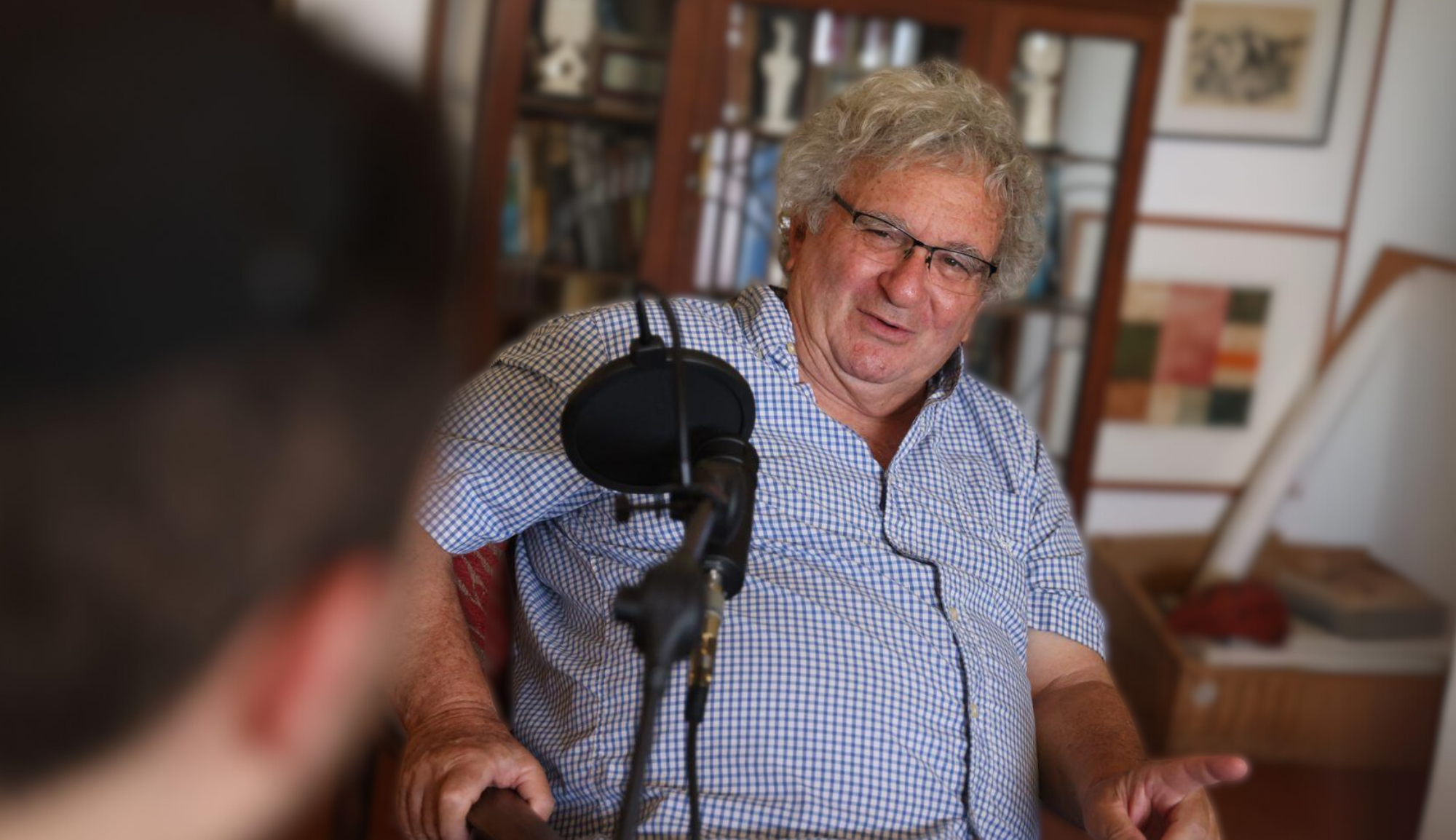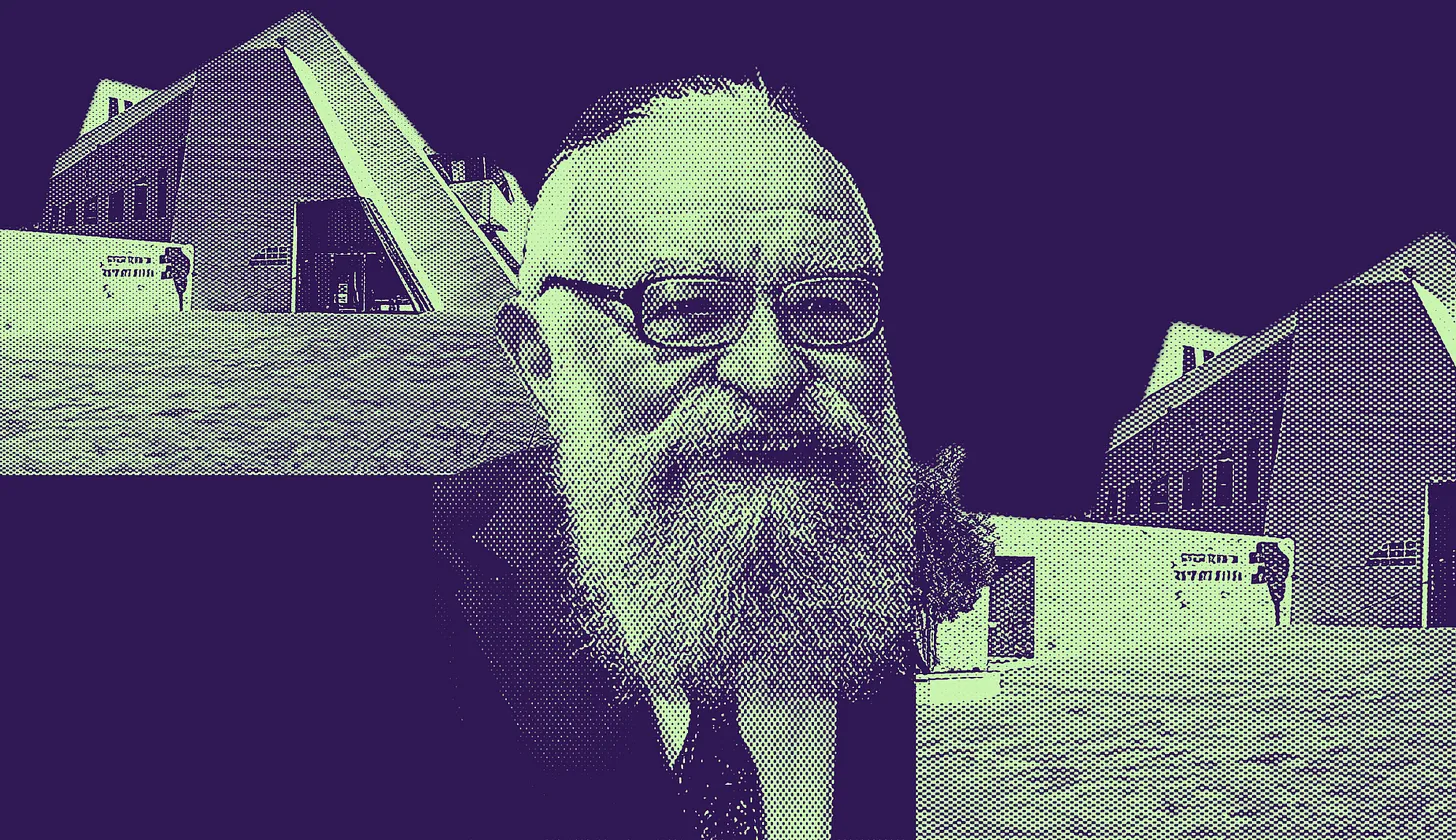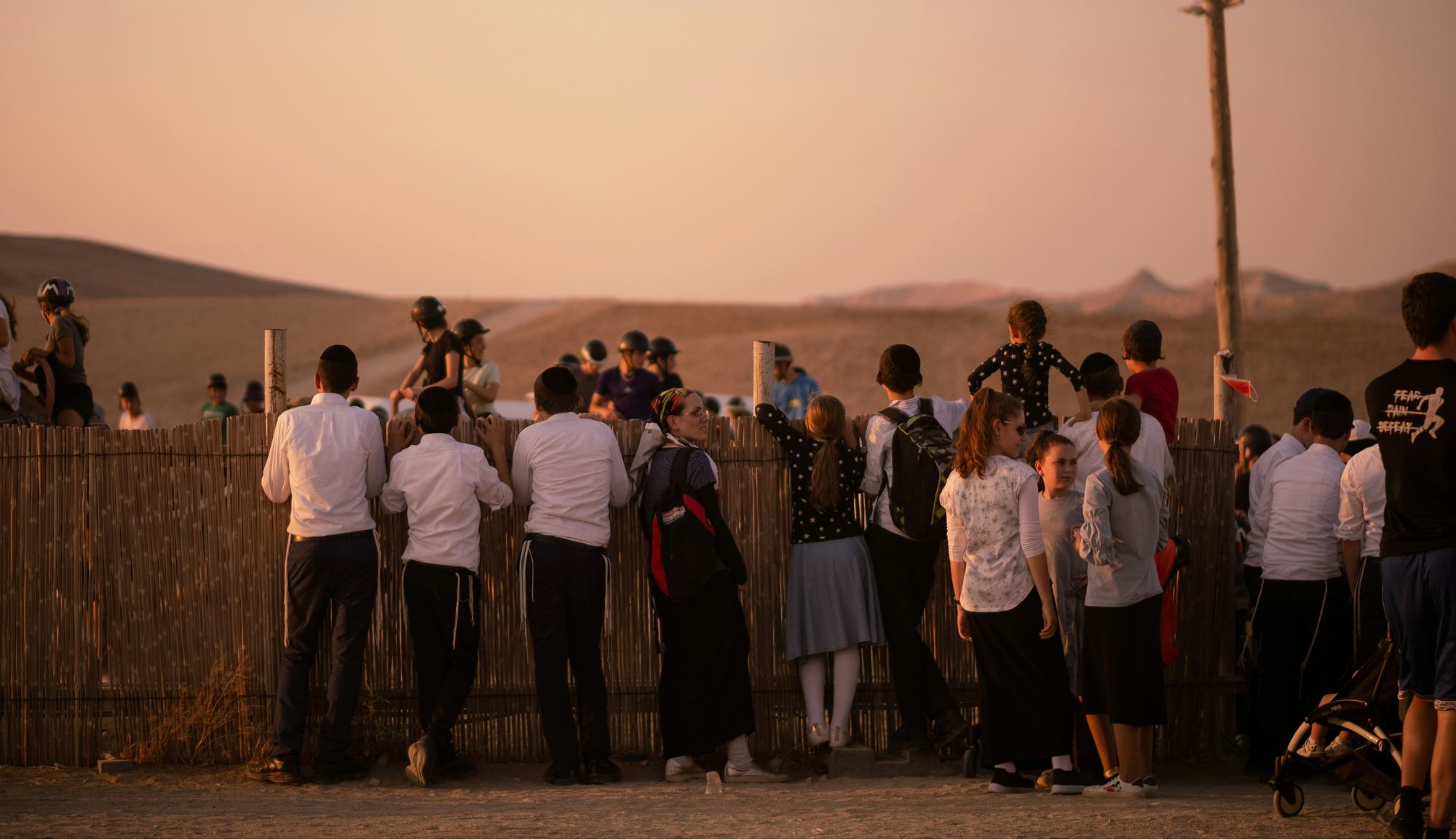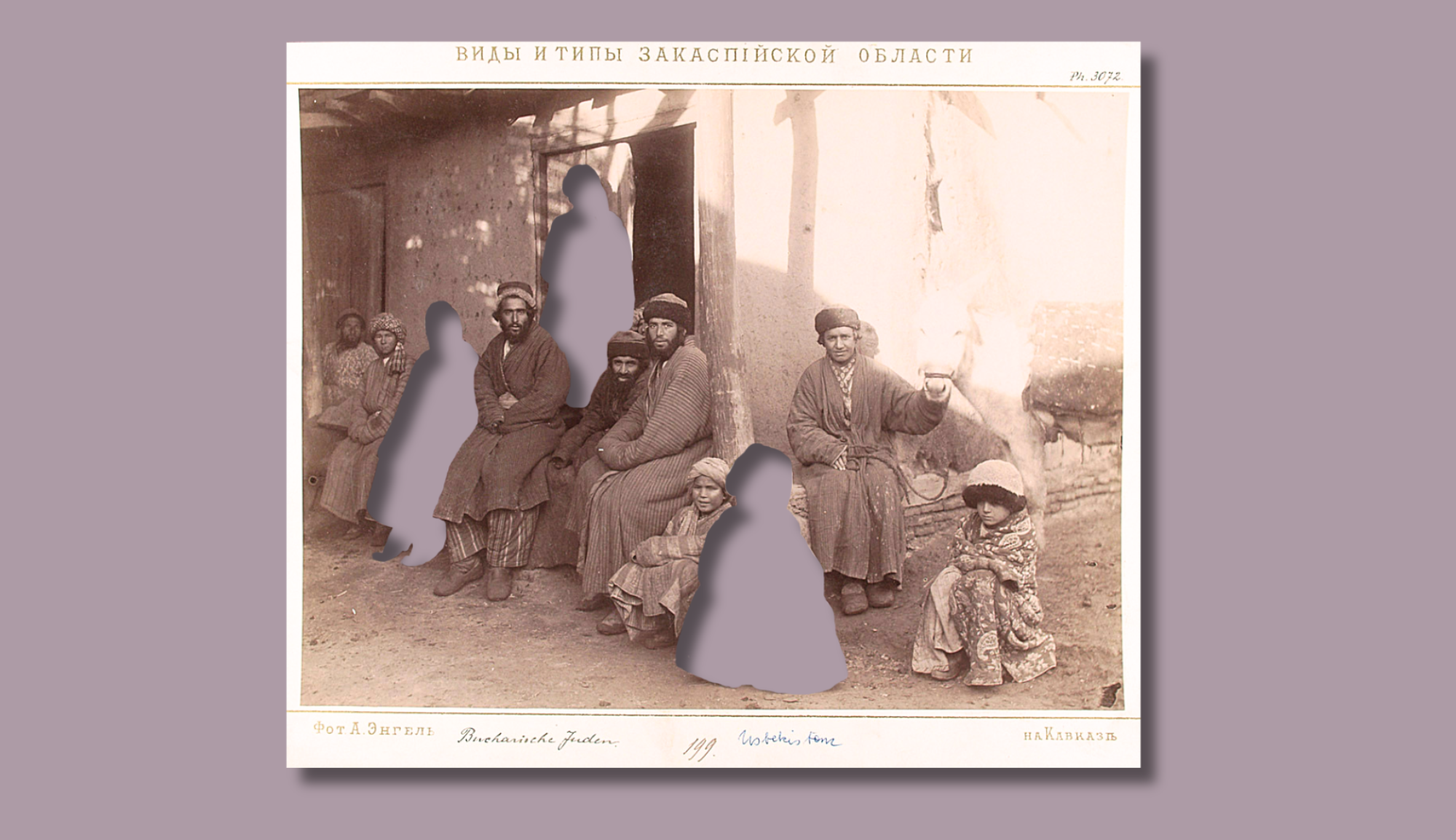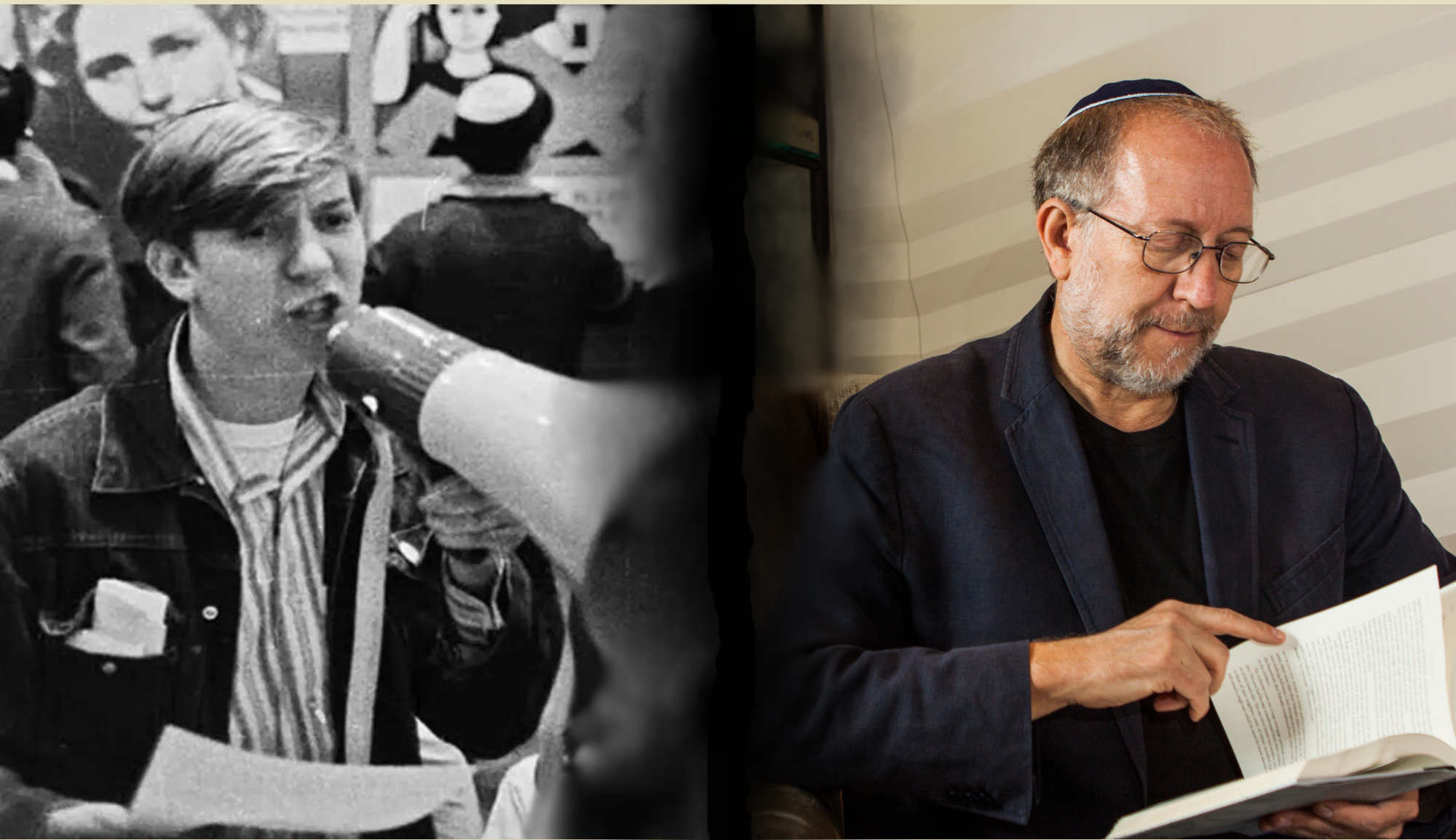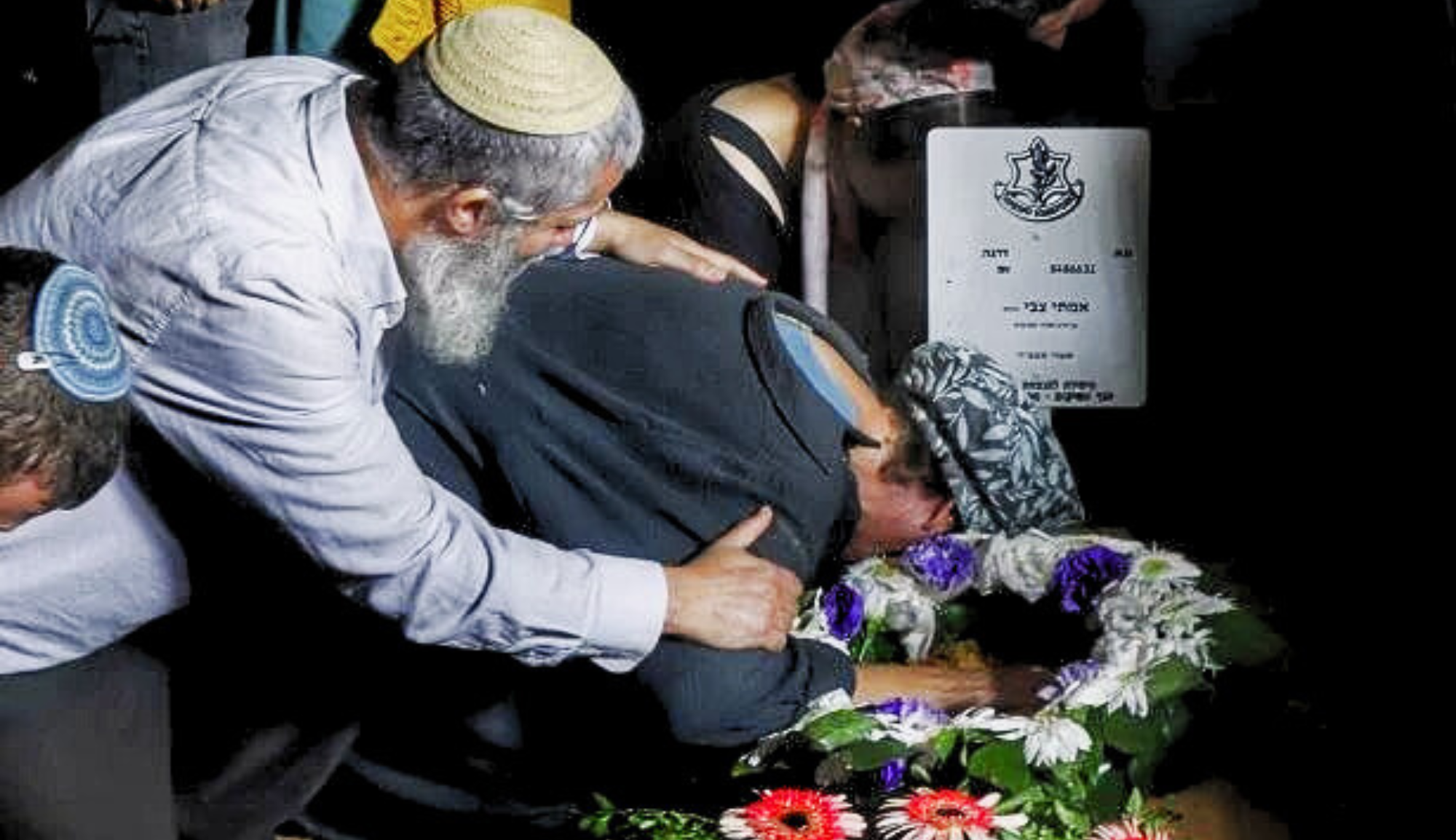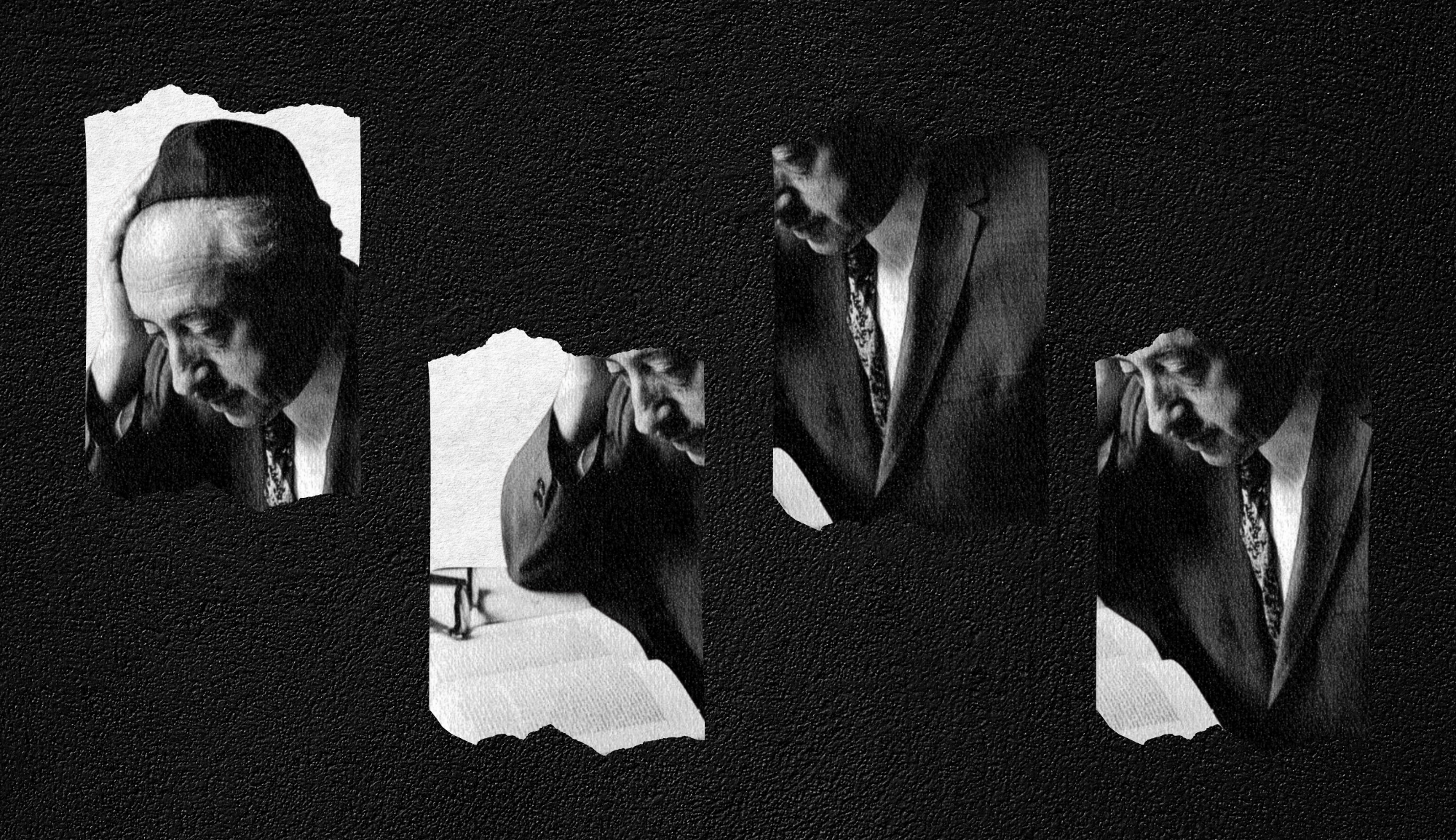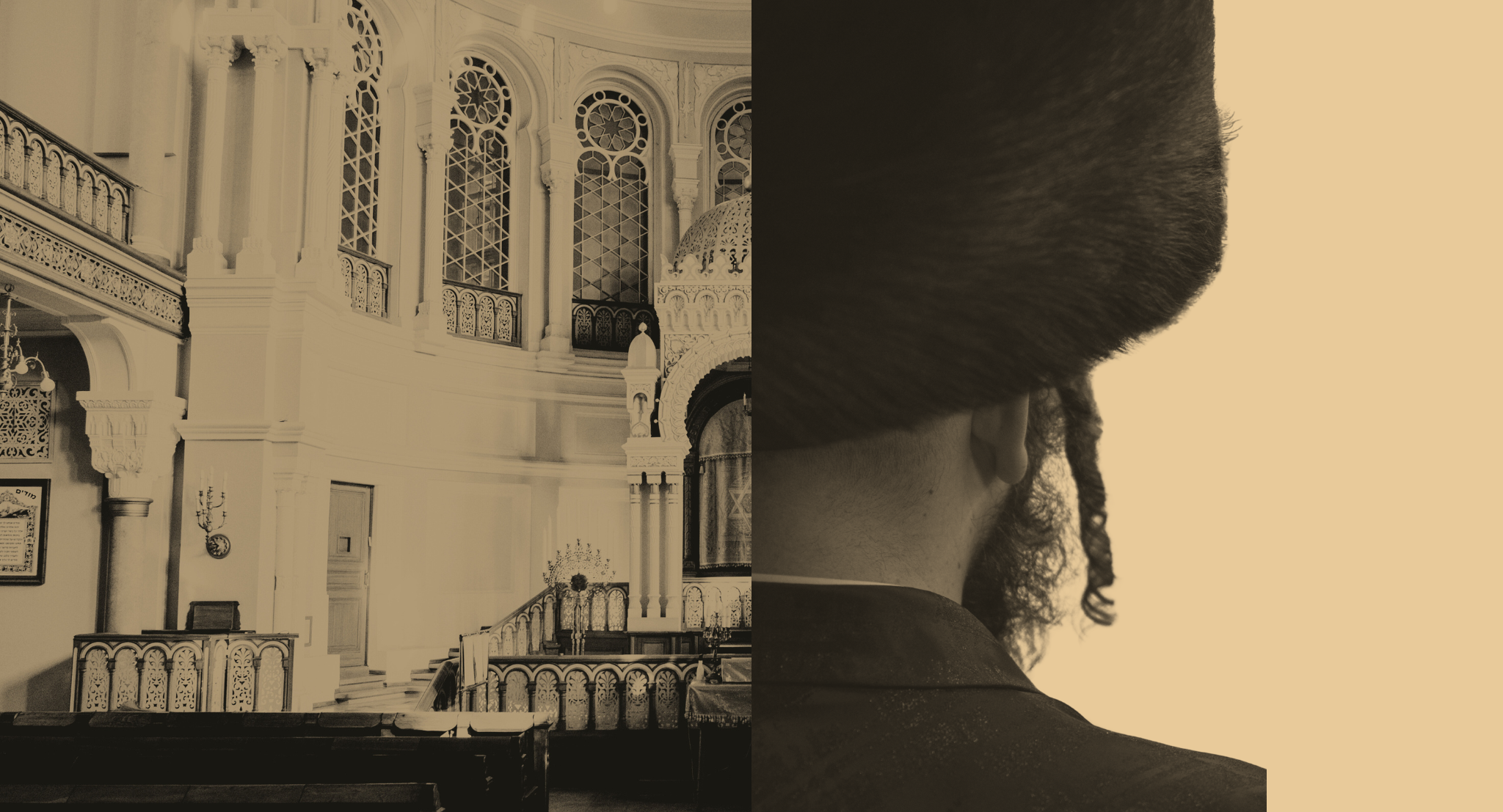Rabbi Shlomo Weissmann: The Rabbinic Will and Agunot
In this episode of the 18Forty Podcast, we talk to Rabbi Shlomo Weissman – head of Beth Din of America, YU Professor, and former lawyer – about the halakhic complexities of, and attempted solutions for, the agunah crisis.
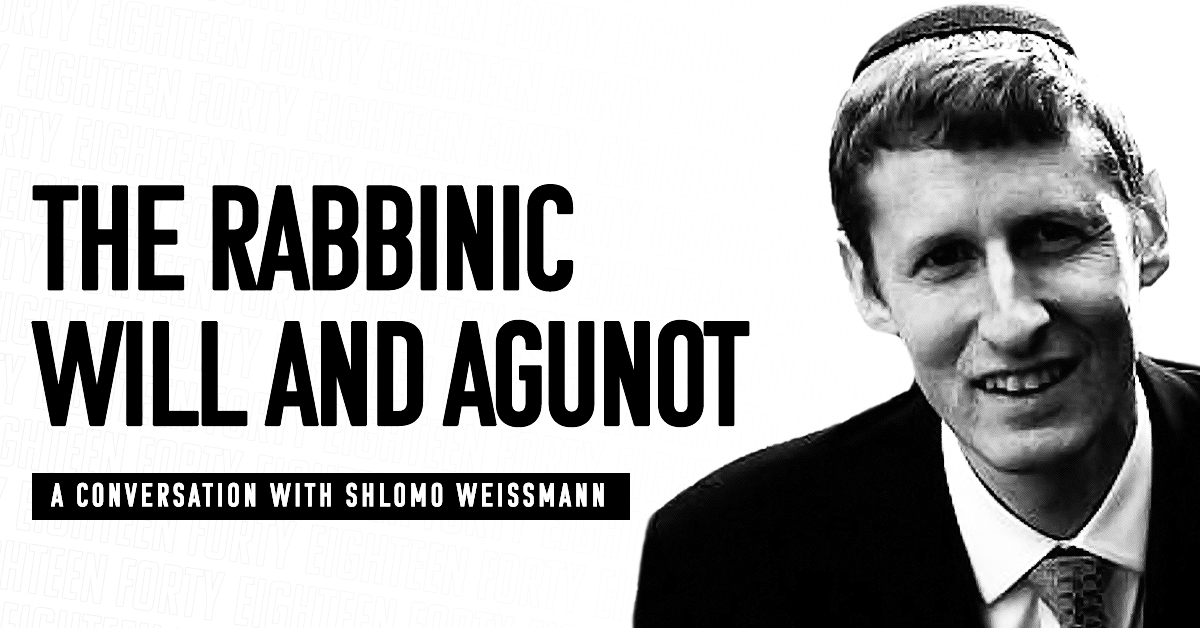
Summary
In this episode of the 18Forty Podcast, we talk to Rabbi Shlomo Weissman – head of Beth Din of America, YU Professor, and former lawyer – about the halakhic complexities of, and attempted solutions for, the agunah crisis.
A halakhic divorce contract, called a “get,” must be given from the husband to wife, and the parties must give/receive the get willingly. When one or the other party doesn’t willingly participate in this process, the marriage cannot be ended, leaving the woman unable to remarry by Jewish law. Traditionally this has lead to women being unable to remarry when their husbands disappeared, but the issue of get-refusal – of husbands refusing to divorce their wives, maybe for leverage or spite, leaving them unable to remarry – is a more recent phenomenon.
- What is the scope of the agunah crisis, and more specifically of get-refusal?
- What halakhic mechanisms does it involve?
- What makes this problem harder to solve than other problems relating to halakhic contracts?
- What solutions have been proposed in the past?
Tune in to hear Rabbi Shlomo Weissman explain the complexities of this issue, and help contextualize it both in Torah and in modern society.
References:
The Power of Moments by Chip and Dan Heath
Scholarly References:
Rabbi Yitzchak Breitowitz
Rabbi Shlomo Weissman serves as the Menahel/Director of the Beth Din of America, one of the foremost institutions for rabbinic legal adjudication. Shlomo received rabbinic ordination from RIETS and is a graduate of Columbia Law School, where he was a Harlan Fiske Stone Scholar. Prior to his association with the Beth Din of America, Rabbi Weissmann worked as an attorney at several prominent law firms, including Debevoise and Plimpton LLP. Shlomo lectures widely on the interface of Jewish and secular law, and is an Adjunct Professor at the Sy Syms School of Business at Yeshiva University. Shlomo brings his decades of knowledge, experience, and dedication to helping agunot to his conversation with 18Forty.
Transcript
David Bashevkin:
Hello, and welcome to the 18Forty Podcast, where each month we explore a different topic balancing modern sensibilities with traditional sensitivities to give you new approaches to timeless Jewish ideas. I’m your host, David Bashevkin, and this month we’re exploring the topic of agunot: the notion of women in chained marriages. This podcast is part of a larger exploration of those big, juicy, Jewish ideas, so be sure to check out 18Forty.org – that’s 1-8-F-O-R-T-Y.org – where you could find videos, articles, and recommended readings.
So I’m not sure if I mentioned this already in the last interview that we did, that dropped, but I am just a ball of anxiety starting a new topic for two reasons. A, undoubtedly, our last month’s topic – which was far and away our most listened to topic – it struck a chord, resonated with a lot of people, didn’t resonate with a lot of other people. And I’m one of those anxious creators that, anytime you hit that stride, I feel like George Costanza, that I just want to lift my arms up in two peace signs and leave the room on a high. Let’s shutdown 18Forty, let’s leave the podcast, the audience is enjoying it, and I just want to leave.
George Costanza:
All right, that’s it for me! Good night everybody!
David Bashevkin:
So when we had to begin a new topic, I’m just nervous, because the expectations are higher than ever, and expectations are the love language of my anxiety. So it can be extraordinarily difficult and scary to begin a new subject. Doing something new, it feels in a way like I’m restarting this, because we’re not going to retain the audience that we built with the last topic, and that’s absolutely okay. We obviously try, we don’t want to scare anybody off. But those expectations, when you finish that cliffhanger, that superbowl, so the next chapter – I don’t know if anybody else has had this – you just have this incredible high accomplishment, something really wow. You wake up the next morning, for me at least, that’s always when I feel the lowest, in a way, the most empty. Like, “What now? What are we going to do next?” And those expectations and anxiety are higher than ever right now, and I appreciate you listening and allowing me to share that. I don’t think I’d be able to continue without opening up about that. So the expectations are higher than ever, and that’s reason number one why I’m very nervous.
And reason number two is this very topic, the topic of agunot. Let me just explain, for any listeners who don’t know, what that is, and we’ll talk exactly about why we’re talking about this, and why I’m so nervous to be talking about this, what the challenges are about having this conversation. Let me explain why we’re talking about agunah right now. An agunah, for those of you who don’t know, is that in Jewish law, there are two ways to get a divorce: either the spouse dies, or the other one is the husband needs to give the wife a get. A get is the Jewish divorce document.
It also happens to be, FYI, my absolutely favorite masechta, tractate, in all of the Talmud. Which, I’m sure we’ll talk quite a bit about why it’s my favorite. But it is far and away my favorite tractate. It’s the only tractate that I studied in every single yeshiva that I studied in: Ner Yisroel, in Sh’or Yoshuv, in Yeshiva University. Everywhere I went – in Sha’alvim, in DRS – every single yeshiva I’ve ever studied in, I learned Tractate Gittin, and I really fell in love with it.
So they need a divorce document in order to dissolve the marriage, and this is an old problem, in many ways, of an agunah, where some husband was lost at sea, they couldn’t locate the husband. What sort of methods could we do to allow the woman to move on and not be chained to that marriage, absent of a divorce and clear evidence that, in fact, the husband has deceased? However, this is also a very modern problem, because nowadays, and it’s hard to date exactly when this is. It definitely has taken a renewed interest, following the enlightenment in the 1800s, of husbands deliberately – and this has accelerated even more in very contemporary times, in the last half a century – of husbands deliberately withholding a divorce document because they want some sort of leverage, or they’re unhappy with the settlement. And they’re doing it in a way that is deliberately abusive towards their spouse, essentially. That is the basic issue of agunah.
So why are we talking about this now? And why on earth am I so very nervous about it? I think that the question, the issue, the plight, the challenge of agunah really is the intersection of three major issues, none of which we’ll be able to unpack completely. But through the lens of this issue, it’s something that I’m hoping that we’ll be able to explore. The first issue, first and foremost, is halakhahic submission and creativity: how Jewish law is both in many ways flexible, can move, can change, but in many ways there are boundaries that, in some senses, are immovable and can’t be moved.
And the notion, particularly in contemporary times, of having to submit to Halakhah when you’re unable to obtain a divorce document is something that, even for myself, there’s a foreignness to it. It makes the reality of how Halakhah so much stronger. There’s a harshness to it that people rightfully grapple with. And I think it’s an important part of this conversation: how do we relate to Halakhah? How are we, as a community, as individuals, when Halakhah, despite our individual plight, despite the tragedy, the suffering, that individuals go through, how do we shore up the strength, if there is any, the capacity, to submit at times and say, “Halakhah can’t move any further than this?”
There is a stubbornness. It is obstinate in a way. There’s a wall that you get to that cannot be moved any further. In a way, it almost reminds me of that final scene in the Truman Show, where he’s in this imagined universe. There’s no movie that has become even more and more relevant over the years, usually not used to explain Halakhah. But he lives in this kind of imagined, created universe – this universe, in this analogy, of Halakhah. Which is not a tangible universe, necessarily – there are tangible objects that relate to it, like a lulav, and esrog, and tefillin, and a sukkah. But it’s, the rules of this universe are not tangible in the way that we have geographic rules, that you could measure a mountain or space. There are intangible rules to this universe. The final scene of the Truman Show, he comes up to this wall, to where the universe, so to speak, ends. And he’s faced with this choice of his individual liberty in the Truman Show, of whether to leave the universe and live his own life, or whether to stay inside.
And I think that the issue of agunah shows the expanses of the universe, everything that is done to make it as flexible, as creative, as moving, as deeply meaningful of what it adds to our lives in incredible ways. And Halakhah is a topic that I hope that we’re going to explore as a topic unto itself. But what agunah highlights is the inverse of that: of when you bump up against that wall, where somebody’s individual plight, their submission to Halakhah cannot be stretched any further. And that’s something that, the fact that it even exists, I believe, is something that we should know and pay attention to.
It’s important to know that there are situations that exist that we need to submit, or we need to find a way, where Halakhah is no longer catering to us and our lives, which is I think how, subconsciously, many of us go about our day and realize that there’s a point where we now need to cater to Halakhah, we now need to submit to that. And everybody has different boundaries in their life. Some people, they bump into it every week on Shabbos where they feel that immovability, that constraint, of Halakhah.
And that’s an okay thing to discuss. I think the existence of that constraint in anybody’s life can be healthy. It shouldn’t be something that you wake up every morning feeling suffocated, I think that’s unhealthy. But that’s certainly not the way the halakhahic system is designed. The halakhahic system is designed to be something that allows you to move and inject that meaning, that godliness, into your life in every waking moment. But there are times where the collateral damage of having a system that moves with you in every moment of your life, where the road does not take you any further.
And the plight of agunah, and why it’s so scary to talk about, is it bumps up to that wall where the road of Halakhah, so to speak, ends. Meaning, Halakhah addresses it. It says that the marriage is still in effect. And it bumps up to our individual liberties. And just the knowledge that such a situation can exist, for many people myself included, it stretches, it helps you imagine and stretch about what my relationship to Halakhah is, what I think should be in a healthy way.
We shouldn’t wake up every morning feeling like we are trapped, like we are estranged in that way. But knowing that there are moments like that I think help you understand and gauge, “What would I be willing to sacrifice to still remain in this incredible world of halakhahic life, of Jewish law, of Jewish living?” I think that the reason why this topic can be so scary is because it highlights the need, at points, and different people of different points. But I think everybody has areas in their life where the notion of submission, of saying, “You know what, the road ends here, there’s not much we can do to help resolve this.” They need to confront that.
And that confrontation is something that you may have confronted or you may have had as like a young child, where your parents took away some of your toys that you wanted to play with on Shabbos. You learned about… I don’t know what it was, Muktzeh, my son talks about electric toys that we don’t let him play with on Shabbos. And learning that there are boundaries to what Halakhah allows is something that different people are introduced to at different points in their lives.
But conceptually, agunah represents that in a major, painful, very acute away. And just the very existence of such a concept is something that can be frightening to people, that we may exist in such a world of halakhahic commitment. But I think that there’s a healthy and constructive thing that comes out of that conversation, which is the notion of submission. The notion of, what are we willing to sacrifice to continue this world? If Halakhah to you is only the rules and regulations that get in your way of you doing what you want, then that’s a system that’s only going to take you so far.
I know for my myself and my wife, I don’t even know if I should share this story, but I’m going to go ahead and do this anyways. I remember one, it was a very wintery Friday night. I think it was during the pandemic. It was on a Friday night. And my wife looked at me says, “Oh, that would be such a good night to watch Shtisel or something.” We both spoke together about how we actually appreciate the fact that we have that limitation, and we’re not going to do such a thing. God forbid that we would do such a thing.
And the conversation was really about the delicacy, the importance of building that structure and fealty and submission, to a halakhahic world that’s going to be there when you need it. If it’s only there when it’s convenient, then the moment that it’s inconvenient, it’s going to disappear. And then when you look to or come back to it, in that moment when it becomes convenient again, it may not be there with that same pristine world that you had once constructed. So I think the conversation of halakhahic submission is an important one.
There is a second conversation that emerges from agunah that makes it extraordinarily scary and fraught, and that is the role of gender in Jewish law. Now this isn’t going to be a total unpacking. We get this criticism a lot. We’re always looking to unpack every single issue that relates to everything. I talk about this a lot with Mitch, my partner in this project, and he’s always playing whack-a-mole and saying, “This issue is connected to this issue, and we’ve got to connect everything.”
It’s almost impossible to unpack every issue in one fell swoop, and the issue of gender in Jewish law definitely merits its own series, as does Halakhah and halakhahic submission. But I think that the issue of gender in Jewish law is obviously something that is front and center with the issue of agunah, because there is a difference in the rights of divorce in Jewish law that a man is the one to give the divorce document to the woman, which therefore makes it this imbalance if the man refuses to give a divorce document. And this gender distinction for me is always extraordinarily tricky to talk about. It’s one that I wish and hope that I will have more of the sophistication to really weighed into in a stronger and more serious way. And I have some thoughts on that. But there’s no question that the very distinctive gender roles in Judaism, and they’re different in different communities, but nearly every Jewish community has distinctive roles in one way or the other as it relates to gender differences in Jewish life.
The plight of agunah definitely puts that distinction under what I would say is an unpleasant magnifying glass, and it’s something that is unavoidable to discuss from the outset. But it’s an issue that’s very much wrapped up into this, not only Halakhah, but it’s a halakhahic submission that has an aspect that highlights our gender differences. I think the final issue, and why we’re talking about this right now, which really makes it a modern issue – What I try to gravitate towards on 18Forty is those issues, those points of theological, sociological, or emotional dissonance, that animates so much of our religious lives, there’s a very modern component to the contemporary struggle of agunot.
And that is, that over the past few months this issue has taken on a whole new level of meaning because of the advocacy surrounding this issue on social media. Now I am not an expert in Halakhah. I am not an expert in gender. I am a little bit of an expert, unfortunately, on social media. I spend too much of my time, as many of our listeners may know, on Twitter. And I do know that world of social media. And I was fascinated to see this intersection between Halakhah, gender, and now social media, all coming to the fore.
I first discovered this because I opened up Instagram. I’m not all that active on Instagram. I basically just take screenshots of my tweets and put it in my Instagram stories, it’s not all that creative, which is probably why no one really cares about me on Instagram. And I don’t blame them, not for a moment. But what I noticed as I opened up Instagram once, and I was tagged in like a dozen posts, all tagging me and saying, you know, “Can you please speak up on this? Can you please post on this?”
I almost always ignore those kind of posts. I don’t like being told what to post about. But I was also really intrigued and actually quite moved that there was this ground-swelling of attention on agunah. And of course I did post about it. I don’t think it did much because I don’t really have much of a following on Instagram. I also posted on Twitter. But I noticed that there’s this intersection of advocacy, of sharing our voice, so to speak, collectively about this issue on social media. And what I was trying to understand more is, what are we advocating for? Who are we advocating against? Are we advocating against the husband? Are we advocating against Halakhah? Are we advocating against rabbis?
And there were mixed, muddled messages that I personally saw on social media, and different accounts were articulating this a different way. But I think overall this movement did something absolutely incredible, because it highlighted the importance of this issue, and it unlocked so much of the invisible power that people have on social media in putting a flashlight on an otherwise rarely thought about issue. How many people wake up every morning and think about the plight of an agunah? I certainly don’t. Although I’m noticing now that the word “plight,” I don’t think I’ve ever use that word except when talking about agunah. That’s just a little language quirk that I noticed now.
There’s something that was still difficult, and something that we’ll unpack about this, which is that hesitance about being organic, real, passionate, and not being performative, which is always something that I struggle with on social media, and how to advocate in a sensible real way on social media without being this performative virtue signaling, that I’m now a part of something. It’s something that I always struggle with, and something that I’d be lying if it was not in the back of my head when this came to light on social media.
But I still think it was an incredibly important issue that absolutely needed to be highlighted. And as I shared in the essay that we always talk about, what this issue means to me, is I personally know two families who have struggled with the issue of agunot. And the crazy thing is that they live on the same block. Again, different relations, I don’t want to share too much information. This is not an issue that’s happening in neighborhoods a thousand miles away from us, families that could have known better.
Maybe I’ll just speak for myself, subconsciously, how you look at it. I know in a very real way, in a very real sense, I know a woman who was chained to a marriage that she wanted to get out of. And the contentiousness, the pain, the suffering that the family went through on this, this is a very real issue, and it highlights both issues old and new, halakhic submission. I think a lot of the gender distinctions in Judaism, as well as the very new medium and platform where these conversations are taking place, specifically on social media, which is why I thought it was an absolutely important topic to highlight a full treatment with all the conversations that I’m so excited about to have on 18Forty.
I’ll just say one closing idea, and that is when we get married, it’s the only ceremony, it’s the only blessing, it’s the only language that we have in Jewish life that we end and say, when we give the ring over to the woman underneath the chuppah, to our spouses, we say that, “Harei at mekudeshes li b’tabas zu k’das Moshe v’yisroel,” It’s the declaration of marriage that I am declaring to sanctify this person, with this ring, kedas Moshe v’yisrael.
And that language, meaning with the knowledge, with the “kedas,” with the implicit knowledge, with the communal knowledge, so to speak, of Moshe, “Moshe Rabeinu v’yisrael,” and the Jewish people. And it’s not just to me, I believe the Hazon Ish writes this explicitly on the fifth page of Tractate Kiddushin, that this notion of kedas Moshe v’yisrael, that marriage is this building block of Jewish peoplehood. And the issues that arise from marriage is not just a problem that women need to speak up about. It’s not just an issue that influencers need to be thinking about.
“Kedas Moshe v’yisrael” says that the building block, the reason why we have this implicit connection to entire Jewish peoplehood, that we get married with the knowledge of Moshe and the Jewish people, is because the family unit is ultimately the building block of the Jewish people. And it is an interconnected building block. When you put bricks one on top of another, when you build a chain, we’re only going to be as strong, we’re only going to be able to persevere, to continue building based on the collective strength of each individual brick in that ultimate, beautiful, grand narrative of the Jewish people, the grandest edifice that we are all a part of building.
And the fact that we add in this communal knowledge into it is a reminder of the communal responsibility in the very fabric of what marriage is. And that’s why I think this is not a women’s issue. This is not a male issue. This is not a social media influencer issue. This is an issue about the Jewish people. This is an issue about Klal Yisrael, about Jewish peoplehood. About insuring that the bricks through which we build the edifice of Jewish life and Jewish people are laid brick by brick, row by row, in a way that we can ensure the collective survival, continuation, growth, beauty, empathy, and graciousness of our amazing Jewish people.
And that is why I am so excited for the three conversations that we have lined up for this month. Our first conversation is with Rabbi Shlomo Weissman, the Director of the Beth Din of America, who is both involved not only in so many gittin – and we talk about the actual process of divorce – but also he is involved in the prenup of the RCA, and making sure people sign that prenup.
Our second conversation is with Mrs. Keshet Starr, and our conversation is, she is the Director of ORA, the Organization for the Resolution of Agunot. She spends all of her time helping individual people who are in this situation get out of them. And we talk about how all of these issues intersect. And what she thinks about all three. She’s just incredibly thoughtful and the work of ORA is really just remarkable. We’ll talk more about that when we introduce that conversation.
And finally, my conversation with Bari Mitzmann. Bari Mitzmann is a massive influencer on social media. She’s got 30,000 or something followers on Instagram, which to me, at least, feels like a big deal. She was very involved in the campaign on Instagram to #freechava. And we talk about the role of social media advocacy, social media health, again, another conversation that God-willing we’ll come back to and unpack in its entirety, but we talk about it in the lens of agunot. And I thought our conversation was also quite fascinating, quite exciting, and really brings together these three factors in this old issue of the plight of agunot – rhere’s that word “plight” again – that is now reemerging in very contemporary garb.
And I am now so excited to introduce my conversation with Rabbi Shlomo Weissman.
Welcome all to the 18Forty Podcast. It is my absolute pleasure to introduce Rabbi Shlomo Weissman, the Director of the Bes Din of America, and also in some ways a colleague of mine – we both teach together the Jewish Values curriculum at Sy Syms School of Business at Yeshiva University. Rabbi Weissman, thank you so much for joining me today.
Rabbi Shlomo Weissman:
Thank you for having me. It’s an honor to be here.
David Bashevkin:
I really appreciate it. And this issue is an issue we’re talking about this month, about agunot, women who are in marriages that they cannot get out of because the husband refuses to give a get. And as we’ve discussed, this can also happen the other way in gender. You could have women who refuse to accept the get. Maybe we’ll talk about a lot of these things. But maybe up front at the top, you could explain to me, what is the foundational dilemma of agunot? Is this a modern issue that just came up six weeks ago on Instagram? What is the foundational issue preventing some women from getting remarried?
Rabbi Shlomo Weissman:
Well, the term “agunah” refers to a chained woman, and classically, what that always meant throughout much of Jewish history, almost all of Jewish history, was a woman who is married, and then the marriage is functionally over because the husband went missing, usually. Whether it be through war, whether he was out at sea and never came back, but he went missing, and there was no evidence of his demise, and that prevented her from moving on with her life, rebuilding her life with someone else. Because without any evidence of his death, the woman remained married to him. The woman can only be married to one man at a time. And that essentially meant that she was chained. That was a classical understanding of agunah.
More recently, in modern times, the word “agunah” has taken on a whole new meaning. Essentially, it describes the same problem: a woman is chained to a marriage that’s functionally over. In modern times, the word “agunah” has the same meaning: it means someone who’s chained to a marriage that’s functionally over. But most often, nowadays, it’s referring to a situation where a woman is unable to remarry because her husband is not willing to give her a get, despite the fact that their marriage is, as I said, functionally over.
Under Jewish law, in order to divorce, in order to dissolve a Jewish marriage, the only way to do that under Torah law is for the husband to give a get, for the wife to receive a get. And the get has to be given of the husband’s own free will. If he’s not willing to give the get, he can effectively render her a chained woman indefinitely.
David Bashevkin:
Allow me to ask you this, I’m just curious, do you have any idea how modern is the problem of get refusal? Meaning, the notion that there would be a man who would refuse to give a get. Is that the last 100 years, 200 years, six weeks ago on Instagram? Meaning, when did that begin as a husband who’s going to refuse to give a get?
Rabbi Shlomo Weissman:
I think you might have always had isolated instances, but the problem really rears its head during the modern era. Post-emancipation, and especially as you get closer to modern day times, because of a problem that’s twofold, that really creates a perfect storm for the agunah situation.
Number one is that in the old days, Jewish communities were autonomous. The people who lived in Jewish communities didn’t have the ability to just be mobile and move outside of the communities. You were stuck within the ghetto, you were stuck within the Jewish community. And Jewish communities, often by virtue of the secular rulers, by the sovereign states, would be self-governing. And so you would have an infrastructure within the community where, if the rabbi and the community leadership said, “Do something,” you had to do it. Your life would be made immeasurably difficult if you didn’t do it. And so if your marriage was over, and they told you to give a get, and you didn’t give a get, you were in big trouble. You couldn’t pick up and leave. You couldn’t go down the block. You can go to the shtiebel in the next town. It didn’t work. That’s number one. And the breakdown of those ghetto walls, the break down of autonomous communities as a result of emancipation, means that now we live in free countries, we’re mobile, people can do whatever they want. And so there’s much less centralized control, much less regulation of what a person can do. That’s number one.
The second point is the very high divorce rates that exist now. In the old days, divorce was a rare event, or at least rarer than it is today. Nowadays I think the most commonly cited statistic, at least years ago, was that 50% of marriages end in divorce. It wasn’t that long ago that secular courts would only grant divorce if you could actually demonstrate to a judge that there was cause for a divorce. The divorce was something that the state granted to you. It wasn’t just a matter of right. You needed to show cause. With the advent of no-fault divorce, which is a new modern construct, California was the first state to pass a no-fault divorce law under Governor Ronald Reagan in 1948, I think. That kind of started the trend towards divorce being much more open and available to people. And now all 50 states have no fault divorce statutes. So it’s just something that is regular, common.
And that combination of emancipation and high divorce rates brings us to the point now, where there are unfortunately too many cases where a husband can withhold a get. For that matter, a wife can withhold a get, can refuse to receive a get. And there’s just nothing that can be done that will necessarily solve the problem. There are things that can be done, but it leads to the problem that we’re discussing today.
David Bashevkin:
So before we get to the contemporary issue right now, I’ve been looking at the way people have discussed this online, which has been something really remarkable, the ground swelling of advocacy that has gone on around that. I’m curious, you don’t have to weigh in now, we’ll come back to that soon.
But one of the things that I’ve noticed is a lot of people seem to be under the impression that the leniencies granted for agunot is just a lack of creativity. Can you explain in Jewish law, stretching back to Talmudic times, the notion that we are lenient, that we have some areas that we can be a little bit flexible, or a little bit more, I’m searching for the right word. I don’t know, maybe “lenient” is the right word, this is the word the Gemara uses: “Mishum igunah akilu bah rabanan,” because of the plight of women – again, it’s talking about women whose husbands are, they don’t know where they are. What were those basic leniencies that we attributed in those original Talmudic situations?
Rabbi Shlomo Weissman:
Well, I think as a prelude, it’s important to recognize that in any discussion about a Jewish law topic, there’s a certain complexity that exists in Torah law where there are different grades of prohibitions. There are some things that are prohibited by dint of Torah law, biblical law. There are some things that are later rabbinic enactments. There are some things that are minhagim, that are customs. And depending on the severity, and the level of the transgression that we’re talking about, or the severity of the personal status issue that we’re talking about, different rules may apply, and different opportunities for being lax in applying those rules, different leniencies might be appropriate.
When it comes to the issue of the agunah, fundamentally, the issue that we’re discussing is the issue of the ability of a woman to engage in a relationship outside of her marriage. Because as a matter of Torah law, biblical law, we’re talking about a woman who’s married. She had a wedding. She’s married by virtue of keddushin, by nesuin, she’s married. Under Torah law it’s an extreme, extreme prohibition for her to be involved in any relationship outside that marriage. And under Torah law, you can’t dissolve that marriage without a get. So we’re talking about a whole panoply of stringent Torah laws, and that greatly reduces the ability of the rabbis to come up with creative solutions, as creative as they are, to try to get around this problem.
David Bashevkin:
So when did they apply that original rule of “Mishum igunah akilu bah rabanan” – and for the plight of these women they were in fact lenient?
Rabbi Shlomo Weissman:
So there are situations that the Talmud talks about where there are leniencies applied to situations of igun, of agunah. So for example, some of the evidentiary standards for proving the death of a husband are lowered. And the rabbis have the ability to do that, because again, they’re working within the construct of certain rabbinical rules that can be set aside or that can be downgraded, “Mishum igunah akilu bah rabanan”. They have the ability to do that.
Here, in the situation of the modern day agunah, there’s no evidentiary issue that we’re dealing with. There’s no lack of information. We know that this woman’s here. We know this man’s here. We know they’re married. And we know that the only way to dissolve the marriage is through a get. There aren’t enough mechanisms that you could push and pull on to try to attack this issue.
David Bashevkin:
So let me ask you, there was a meme going around. Rarely do you have a meme on Instagram that covers so much of rabbinic law. But there was a meme going around that was quite accusatory towards the structure of Jewish law. And it basically said, “On Pesach, Passover, we have a rule about selling the chametz,” which is a fairly modern rabbinic adventure. When I say fairly modern, it’s not written in the Torah, i’s not discussed at length in the Talmud. I don’t think it’s discussed at all. It’s a later rabbinic –
We have some Talmudic leniencies like the Prozbul, which allows you to have certain business transactions even during the Shmita cycle, which prevents people from owning property. We have rabbinic laws that allow people to carry on Shabbos, known as the eruv. We have so many of these leniencies. And what this meme – again, I didn’t write the meme, just to be absolutely clear to our listeners, but I noticed it, and I saw it circulating. It said, “But all of a sudden, on this issue, we have no allowances. We don’t have any leniencies.” And they were attributing it, I believe, and maybe I’m misquoting the meme, I don’t want to be guilty of that. God forbid. But in the meme, it basically seemed to be attributing this for a lack of rabbinic will. One scholar once said, a feminist scholar once said, “Where there’s a rabbinic will, there’s a rabbinic way.” How do you view the absence of these kind of creative solutions? And maybe we’ll discuss a few of them vis-à-vis the agunah issue. Is there, in fact, a lack of rabbinic will?
Rabbi Shlomo Weissman:
I don’t think there’s a lack of rabbinic will to try, at least among many rabbis. At least the rabbis that I associate with, the rabbis that I look up to as my mentors, there’s no lack of rabbinic will to try to push and pull as much as possible in an effort to address what’s obviously a very challenging problem. The problem is that there are some things that you could push and pull, some things that are malleable, and some things that are not. There are limits to halachic mechanisms.
But that said, all the mechanisms that you mentioned, Prozbul, a whole panoply, a whole bunch of mechanisms – Prozbul, Heter Iska, Heter Mechira, we can talk about them in detail – the way they’re structured, mostly, is that they structure a transaction, or structure an interaction, structure a halakhahic status before the fact, in order to set it up for success in dealing with it within a contemporary challenge. So for example, when you’re setting up loan, and you want to collect interest, or you want to collect something that looks like interest, the only way to do that is to enter into a Heter Iska, to enter into a document that characterizes that loan ab initio, or that transaction ab initio, as an equity arrangement. That then allows something similar to interest to be paid.
Now, if you fail to do that, if you fail to enter into that Heter Iska at the outset, then you’re up the creek. There’s nothing, there’s no – the collection of ribis, of interest, is a Torah law, and there’s no way around it. It’s not permissible, it’s not permitted. So in thinking about how to structure a solution to the agunah problem, I think that kind of paradigm, which applies I think pretty much to all these innovations, all these heterim, all these leniencies that we’re we’re talking about, the way to think about it is, how can we structure Jewish marriage in a way that won’t fundamentally alter the sanctity and the structure of Jewish marriage, but will try to avoid it and address this problem? And the answer to that is, the rabbis have come up with something that does address it, in the form of the prenup.
David Bashevkin:
I want to get to the prenup. But before this, I want you to dispel some of my ideas. I do not sit on the Beth Din of America. You guys, even though I’ve applied every single year, you don’t respond to my applications to be a sitting dayan on the Beth Din America. I can’t fault you for that. And I know that, again, I’m coming a little bit from Jewish history over here. I know in really the early 1900s, late 1800s, there was an idea floated, I believe, from rabbis in France: “Why don’t we just have every marriage be a conditional marriage?” Just say, “When you get married, we’re only getting married, in the event that you refuse to give a divorce and it ends with that type of acrimony, the whole marriage should dissolve.” We have plenty of examples of conditional marriage, “I’ll marry you if you give me $100.” “I’ll marry you if we move to Israel together.” So why not have all marriages, and this is what was floated in those early 1900s, why not have all marriages be conditional?
Rabbi Shlomo Weissman:
It’s true. These were suggestions that were floated. Keep in mind, first of all, these are suggestions that would have to follow that same pattern, where the structure of the marriage would have to be fundamentally altered from the outset. This wouldn’t solve a problem of a couple that’s already married. The reason, I think, that those proposals fell short, or that those proposals didn’t meet with universal acceptance, was because they too fundamentally changed the structure of Jewish marriage. Making every marriage conditional threatens the sanctity, threatens the integrity, of all Jewish marriages. That’s number one.
Number two is, as the people – such as Rav Henkin, who proposed one solution, for example, in the early 1900s – as they pointed out, at the time that they made their suggestion, it wouldn’t really work unless you had universal acceptance of the mechanism. Because these were mechanisms that we depended on dissolving the marriage essentially without a get given at the time of the dissolution of the marriage. So it required everyone to look at this after the fact as a marriage that was never a marriage, as opposed to a solution that might incentivize the giving of the get now, where the stakes are a little lower, because everyone would agree presumably that a get given now will dissolve the marriage.
So those problems, the fact that the solutions undercut the sanctity, the integrity of the marriage too deeply, and the fact that they relied on universal acceptance which wasn’t forthcoming, those factors doomed those solutions from the outset. You could see, from the fact that those rabbis propose these solutions, and tried to push them, and try to at least get them into the dialogue, shows that in fact there was a rabbinic will. It’s just that those solutions didn’t pass muster, ultimately, among the community of poskim that would have to improve them. Not because of a lack of Rabbinic will, but simply because there was no halakhic way to make those thing things happen.
David Bashevkin:
If you fast forward about half a century, there was another suggestion that was made by the Head of JTS, Rabbi Saul Lieberman. Again, he was more traditionally trained. There were some efforts, and I believe he even discussed with Rabbi Soloveitchik about coming up with a clause inside of the Kesubah that would incentivize giving a proper divorce. I may be misunderstanding it. Why did that not work out? And maybe coming and discussing the modern day prenup, and how that, the RCA’s prenup, how is that different than the original suggestion of Rabbi Saul Lieberman that didn’t seem to take hold within the Orthodox community, even though I believe, historically, they very much tried?
Rabbi Shlomo Weissman:
My understanding is that what was problematic with the Saul Lieberman clause was that it altered the text of the ketubah, and the ketubah is an ancient document that’s rooted deeply in rabbinic tradition. There was just a lack of comfort of putting that clause in the ketubah, it was just too radical a divergence from the way marriages traditionally were done. But if we’re tracing the trajectory, his solution was a little closer. Each decade they got a little closer to the solution that ultimately resulted in the prenup. And I don’t want to draw a straight line necessarily between the Lieberman clause and the prenup, because there are different in many different ways. But at least that was what buried the Lieberman clause in the eyes of the Orthodox world, as I understand it. Decades later, there was a proposal of a prenup that had a liquidated damages clause.
David Bashevkin:
What does that mean?
Rabbi Shlomo Weissman:
That meant that it was a contract, it was prenuptial agreement, a contract that was entered into by the husband and wife at the time of their marriage, or prior to their marriage, that said that if the husband refused to give a get for X number of days or for X number of time, he would have to pay money, as damages, for the harm that he caused his wife.
That was problematic because again, as we mentioned, it has to be given of the husband’s free will, and a get given under threat of potential penalties could be considered, according to some authorities, at least to be a forced get, a get me’usa. But again, we were getting a little closer and a little closer. Ultimately, the prenup that was developed by Rabbi Willig consulting with various rabbis, Rav Zalman Nechemia Goldberg, Rav Ovadia Yosef, Rav Chaim Zimbalist, and others at the time in the mid 1990s, that pulled the best elements of everything. It was a free-standing agreement that’s entered into by the husband and wife. It didn’t include liquidated damages clause, and instead included a bonafide support obligation. So it said essentially that for as long as the husband and wife remain married to one another, from the time they separate, the husband has to pay support to his wife at the rate of $150 per day. Originally it was $100, they then raised it to $150 a day. That’s one provision of the prenup.
The other provision of the prenup, importantly, is the one that names a specific Beit Din, a specific rabbinical court – the Beth Din of America in the standard form of prenup – that would be charged with making decisions about whether or when a get should be given, and would be charged with making decisions about this support obligation, actually enforcing, putting into place, the support obligation. And those two provisions together formed the heart of the prenuptial agreement. Support obligation and arbitration, maybe naming Beth Din of America. That enjoyed wide rabbinic support from a whole host of rabbinic authorities, and that’s what thankfully has made significant headway in the North American Jewish community in the last 25 years or so.
David Bashevkin:
So maybe you could talk a little bit about what the – I mean it has been widespread, but I know outside of the Yeshiva University, whatever you want to call it, Centrist Orthodox, whatever word suites you, it still struggled to become universally acceptable. And I’m curious, what are the most frequent questions or hesitations you get about entering into a prenup? What do you think has stopped it from becoming truly universal as a part of the marriage ceremony?
Rabbi Shlomo Weissman:
So I think it’s important to distinguish between the policy arguments that undergird any kind of opposition, and policy hesitations on the one hand, and formal halakhic objections on the other hand. As far as formal halakhic objections, the phrase that’s bandied and that’s relevant to any discussion about a solution to the agunah problem is “get me’usah,” we’re always worried about a get that is forced, that’s not given under the husband’s free will. And there are pages and pages of rabbinic literature devoted to the topic of what constitutes a forced get, what constitutes a get given under his own free will. And there is a lot to be said in the analysis. So, among the critics of the prenup, that’s the argument that they raised: that somehow this agreement, this obligation to pay support, somehow results in get me’usah.
The actual number of formal written presentations, formal written articles or teshuvas that have been written that come from this perspective is few. Some of those written arguments and written articles make assumptions about the prenup that are frankly not accurate in the sense that, if you were to talk about a prenup that would call something a support obligation, but really it’s a penalty in disguise, because it’s something that doesn’t look at all like bonafide support, then maybe you could attack the validity of the prenup. But the prenup that we have, that’s been promulgated over the last 25 years, carefully calibrates the amount that’s due – it’s $150 a day, which comes to about $52,000 a year, it’s a reasonable level of support – and it’s consistent with the argument that this is a bonafide support obligation. So I’m not sure how many poskim in real life conclude that the position of a spousal support obligation –
Which is completely consistent with the institution of the Ketubah. The Ketubah says that the husband has to pay mezonos to his wife, he has to pay spousal support to his wife. The prenup is just a formalization of that obligation. It sets it at a rate that’s perfectly conceivable, perfectly reasonable, maybe even it’s a little low. So it’s hard to draw a line between that and a claim that it results in a get me’usah because it imposes some sort of elicit penalty.
So, that brings us to the other dynamic here, which is the public policy or cultural issuing play, which is to say that in many circles, I would say in all circles of Orthodoxy, there is a reticence and a reluctance to fundamentally alter Jewish rituals, and especially Jewish rituals surrounding marriage and divorce. So that reluctance, that reticence, I think plays a large role in the reluctance to accept the prenup as a solution across the board. I think accepting the prenup as a solution in light of, or in the face of that reluctance, in the face of the natural conservatism that exists among rabbinic deciders to change things like marriage and divorce in any way, can only gain traction, the idea of getting people to sign the prenup only gains traction if you view the agunah problem as a serious, serious problem that affects modern Jewish life. And I think that if you were to look across the spectrum of communities and across Orthodoxy, the part of the community that has been more jolted by the problem of the modern-day aguna, views it as more of a fundamental crisis, and is really, really irked by it, they’re the one that are more open to accepting the prenup as a solution and insisting that it be signed. And communities that have not faced the issue head on have not viewed it as as fundamental a problem, as grave a problem, have [inaudble] to the conservatism that’s natural in the development of halakhic issues, and have been more reluctant to accept the prenup.
David Bashevkin:
So I know you don’t teach Jewish public policy at the Sy Syms School of Business – that’s my domain – but I will momentarily hand you the reins for a moment. I’m curious what efforts, if any, the Beth Din of America has made, or maybe you don’t look at this is your job, in trying to garner wider support for this solution? Meaning, we see there is a reticence, and I think it’s slowly gotten better and better. I’m curious what your stance is, as you’re the director of the Beth Din, you work with Rabbi Willig, you worked with Rav Gedalia Dov Schwartz zecher tzadik livracha who passed away. But I’m curious what your role is, what’s your sense of responsibility in helping – I’m going to use a terrible word right now, don’t use this word in your marketing brochure – “evangelize” the prenup into more conservative, not the denomination, but people who are more reticent to make these changes in marriage life in the Jewish community?
Rabbi Shlomo Weissman:
To answer that question really is that we’re a small organization with a big caseload, and it’s hard for us, we just don’t have the manpower, we don’t have the budget, to, with all our strength, with all our ability, evangelize, to borrow your word, and to try to promote the prenup. We have tried over the years giving lectures, offering continuing legal education seminars to lawyers, where we’ve talked up the prenup and talked about its importance, holding agunah conferences over many years to try to raise awareness, published articles and the like.
We’ve also relied upon our partner organizations, organizations like the Rabbinical Council of America, who have done a really good job of spreading awareness of the prenup through regular resolutions at conventions that urge the rabbis to adopt the prenup. They even require RC member rabbis to use the prenup when they officiate at weddings.
David Bashevkin:
I don’t mean this dismissively, and I’m saying this honestly: there’s nothing that moves the needle in my mind less than a resolution at an RCA convention. And I say that with great respect for the work of the RCA. I’m trying to think almost more like a marketer, of like, how could we build partnerships outside of the RCA Beth Din of America world to allow for more widespread adoption if it’ll save even one person from being in this situation? I don’t know if that’s your problem to solve, I’m just trying –
Rabbi Shlomo Weissman:
Well, it’s my problem as a member of Klal Yisrael, first of all. As you know, we all are in this together, and we all have to think about how to solve it. It’s my problem also because the Beth Din of America is invested heavily in this instrument. And I can tell you, from where I sit, I am the guy who maybe has the most firsthand knowledge about how truly effective the agreement is, how truly effective this prenup is. It really works in so many cases. So we have a story to tell. Maybe we’re not good PR people, because we’re a court more than anything else, but I’m open to suggestions. And if there were resources available to spread the word, for sure I think that should be done. I think also, it’s important to note that the way to spread this is not necessarily through newspaper or internet advertisements, as much somehow spreading the word among rabbinic leadership in communities to the right of let’s say the RCA, and also among the grassroots.
I think something like the current excitement, the current grassroots movement, momentum behind the agunah issue will in fact move the needle on this. I think that, I’m confident, I’m hopeful, I’m optimistic, that greater awareness of the problem and greater awareness of potential solutions out there will lead to communities beyond the traditional constituency of the prenup to adopt it.
David Bashevkin:
Yeah, I remember when I first called you, I was actually surprised, because we put this together really last minute, and I was just genuinely curious about seeing so much new-found attention about this online. And I remember when I called you asking if you’d be willing to be interviewed, I’ll be honest, I wasn’t shocked, but I was surprised that you were enthusiastically yes in what’s not a quiet week. We’re recording now the week before Pesach, and you said, “Absolutely.” You knew about, I assume, I haven’t seen you a great deal on Twitter and Instagram –
Rabbi Shlomo Weissman:
I’m a follower of yours, I don’t think you’re a follower of me.
David Bashevkin:
Oh, that means a great deal. But let me ask you this. I do want to hear about your firsthand story, because I do think that that’s sometimes what impacts the most. I want to start with some of the third-rail, more controversial questions and stories, and then move to hopefully what can be more constructive and helpful.
My first question is, what do you tell husbands in particular who are using the get as leverage in order to work out custody agreements? Meaning, the most common question that I’ve seen is, this is the husband’s only leverage in the marriage. They want to make sure that they get the visitation rights that they have. What is your response, from the Beth Din America, to those husbands who say, “Hey, this is my one chip. I have to use it in order to ensure that I have the custody that I want.”
Rabbi Shlomo Weissman:
So in the seat that I sit, the job that I do that I show up to work every day at, I have to be, and I am, very procedurally oriented. So there is a procedure that must play out in any case of divorce, in any case of potential igun where the get is in play. We offer a forum for dispute resolution. So if a woman calls us up, or opens a file online for a get, we send out a hazmana, a summons to come to Beit Din. That hazmana doesn’t mean you’re obligated to give a get, it means that your wife has asked for the Beit Din to get involved in this case and to adjudicate differences between you. And specifically, in what we’re talking about, differences between you regarding whether or when a get should be given. We send the first hazmana, second hazmana, third hazmana, and ultimately we can issue a seruv, often do issue a seruv, if the husband refuses –
David Bashevkin:
A seruv means, a hazmana is a summons, and a seruv you would translate as a –
Rabbi Shlomo Weissman:
An edict of contempt, a document of contempt, a statement –
David Bashevkin:
Contempt of court, so to speak.
Rabbi Shlomo Weissman:
Right, a statement on paper that says that this person has been summoned to rabbinical court at the request of his wife for a get, and he has declined to appear. He has declined to appear before the Beth Din of America or any other rabbinical court. That seruv is an important piece of paper, because that gives license to the community, that signals to the community, that social pressure should be put on this individual. That’s fueled and formed the basis for a lot of the current movement on social media. So, that’s the procedure we stick to. We send out a seruv where the husband refuses to come to Beit Din. But where the husband has a perspective where he thinks that it’s appropriate for the get not to be given right now for whatever reason, we offer a platform, a forum for him to raise that issue, and for his wife to counter that, to tell her story and explain why she thinks the get should take place now.
They do this in front of a panel of three neutral rabbis who have no connection with either of the parties and who are not familiar with the case at all, and they hear it out. And they will issue an unbiased decision on the appropriate timing of the get, that itself may result in social pressure if they say that he should give the get and he refuses to comply. But we promise people an even playing field, a level playing field, and a forum for the resolution of this issue, among all the other issues that we that we regularly decide. So that’s what I tell people. If a husband calls me up and says, “I need to withhold this get because I need it for negotiation leverage,” I say to him, “You’re saying this to the wrong person. Come in front of the panel rabbis, and we’ll give you your day in court, and we’ll issue a decision on it.”
David Bashevkin:
S,o let me ask you this, and this is really tricky. I know somebody who did a prenup, they signed one, but it was not enforceable – I believe because it was not notarized – and it led to major aguna issues. Walk me through some of the common mistakes that you have found that people, even when they’re trying to avoid these issues, they just forget. I signed a prenup, I actually think we did a postnup, I can’t remember 100%. I think you email it to the Beis Din, and then I forgot about it. I don’t know if you guys still have it, am I supposed to have it, I don’t know anything. What are the common mistakes that people make that are avoidable, that they should be aware of, in order to avoid God forbid being in such a situation?
Rabbi Shlomo Weissman:
I’ll mention three. First of all, it’s important to know what you’re signing. This is a real, live, legal document, this isn’t just some kind of form that you sign and never read. It’s important that –
David Bashevkin:
It’s not like your mechiras chametz form.
Rabbi Shlomo Weissman:
Well, I don’t want to malign any other legal document, but this is an important document.
David Bashevkin:
Yeah, I’m sorry.
Rabbi Shlomo Weissman:
No, this is an important document. You gotta know what you’re signing. So it’s important for rabbis who are introducing this document to the couples, it’s important to couples who themselves are signing it, to know what you’re signing. It’s a real document, which means that you shouldn’t sign it under the chuppah with no seconds left to go before your marriage. It’s something you should look at a week before, two weeks before, a month before, and really understand what you’re signing.
So that’s number one, that’s just one practice pointer in terms of the signing. Number one is just the technical aspects of signing. As you mentioned, it’s important, especially New York state, a prenuptial agreement is unenforceable if it’s not notarized. So, no matter where you are, best practice is to have it notarized. You wouldn’t want someone scrutinizing the validity of the signature later on claiming it was a forgery or something like that. Notarization is a good practice. You can actually now notarize online in this world that we live in, www.notarize.com, 24 hours a day you could get a live notary to notarize your document, costs I think $25. So it’s a no brainer, not difficult to get something notarized nowadays.
And then the third point is, if you lose the prenup, it’s kind of worthless. So don’t lose your prenup. Don’t even put yourself in the position where you might lose the prenup, because you probably will lose the prenup. It’s probably not something that’s on your mind during the course of your –
David Bashevkin:
Yeah, spoiler alert, I already lost my prenup. I lost, for sure. What do I do?
Rabbi Shlomo Weissman:
Yours is lost, so the answer is you guys send it into the – well, if lost your prenup, just sign –
David Bashevkin:
I did send it into you guys.
Rabbi Shlomo Weissman:
Oh, if you sent it in, then it’s not lost. We have a registry of prenups. You can email, you take a picture of your prenup or scan it, send it to prenup@bethdin.org, or info@bethdin.org, it all goes to the same place. And we have a registry of prenups, they’re double backed up, they’re secure in our registry. And that’s important. Don’t rely on your rabbi. As great and amazing as rabbis are, some of them are not great file keepers. So send your prenup to Beth Din. We have a registry where we keep them. That’s what I would say. Otherwise it’s not a complicated process. It’s a relatively short document. It’s two pages, it’s not complicated, and it’s really easy to do.
David Bashevkin:
And tell me the story. I mean, there’s almost a veil of mystery around the get ceremony. In Yeshiva, the masechta, the tractate that I fell in love with, was Tractate Gittin, which discusses divorces. I’m wondering if you could share with me – and obviously there’s a great deal of confidentiality, I’m not asking you to share any names – can you walk me through, what is the basic process? The get is secure. I’m ready to do it, fine I’ll do it. What’s the process that goes on behind closed doors, and what lengths have you ever gone on to make sure that a husband who’s been recalcitrant, which is one of my favorite words that I’ve learned in this process, who’s stubborn and doesn’t want to give this get. What length have you gone to make sure that in a moment of appeasement, they’ll say, “Oh fine, maybe I’ll do it,” that you’ll kind of snap into command and make sure it happens? Or you’ve got to book it, it’s like getting a vaccine, you gotta sit by a computer and book six months in advance, like a doctor’s appointment.
Rabbi Shlomo Weissman:
We try to make it as streamlined and easy as possible, so you don’t have to click refresh a million times in your computer to try to schedule it. It’s not like a vaccine appointment. We have a good office staff who are committed to making the scheduling process easier. A get takes about an hour, an hour and a quarter in total.
I’ll walk through the process. Essentially, once you schedule it, there are two ways to do a get. One is where both parties are present, husband and wife are there in the room together. And the other way to do it is through a shaliach, through an agent, through a messenger, where the husband appears in front of the Beit Din, authorizes the get to be written, signed, and delivered, appoints a messenger to do that, and then the wife makes a separate appointment and comes at a different time and receives the get. That’s important because sometimes there’s orders of protection that don’t allow the parties to be together, sometimes there are emotional reasons or practical reasons why the parties won’t be together, can’t be together. Sometimes the parties are in two different locations, so you can appoint a messenger in New York to deliver your get, and then that messenger appoints a sub agent in Los Angeles to deliver the get.
But let’s talk for a moment just about a straight forward get process. You book the time, you come to our office, and present at the get ceremony is a scribe, a sofer, two witnesses, two eidim, and a rabbi who will oversee the process. We start by, and we present the husband with a script, with a written out script – it looks like a play – where it says, “Rabbi …” and then his line, and the husband, his line. We instruct the husband to, obviously, when he’s reading from the script, tell us if anything is not accurate, but generally speaking we’ll stick to the script. And the rabbi first asks questions of the husband and then of the wife about their names, because the get includes the names of the parties, includes the date, includes the city in which we’re doing it. It includes nicknames, it includes certain nick names, names that are in use, it doesn’t include names that are not in use. So we have to ask a bunch of questions about the names.
David Bashevkin:
I’m just curious. Do you put on your social media handles? Is that a thing? Like I’m DBashIdeas in certain spaces.
Rabbi Shlomo Weissman:
Maybe if you do enough social media… The answer is if someone calls you that, or if three people call you that regularly, then –
David Bashevkin:
I have no plans to give a get if my wife is listening right now, just to be absolutely clear. I’m just curious because I do spend a great deal of time on social media. So keep going. They have the script, they have the names.
Rabbi Shlomo Weissman:
They have the names, then you read from the script. The script is basically, the beginning of the script is a whole litany of questions and answers that ensure the get is being given of your own free will. So we ask whether you’re giving the get under pressure of a judge. We ask you whether you’ve ever said anything that would potentially cancel the validity, or preclude the validity, of the get, and then we ask you to, what’s called a bitul noda’os, to cancel any statements that you might have made that would harm the validity of the get.
We do a hatarat nedarim, which is a cancellation of vows, similar to the one you do on erev Rosh Hashana, where you cancel any vows that you might have made that might be compelling you to give the get. We don’t want you to be in a situation where you can say you’re only giving the get because you want to comply with the vow that you made previously to give the get. So we cancel all the vows to make a clean slate to ensure that you’re giving the get of your own free will. And then the script transitions to the actual authorization of the get. You authorize the scribe to write the get on your behalf, and specifically for your wife.
You then authorize the witnesses to sign the get, and to witness the delivery of the get. At that point, the scribe gives you the writing materials that are going to be used to write the get, because the get has to be of your own materials. You have to own the ink, you have to own the paper, and so you acquire title to those writing materials and then ask the scribe to write the get on your behalf. At that point, the scribe writes the get. That takes, with our scribe, we have the fastest scribe around, Rabbi Yaakov Lichter, who has been doing this for decades. His record I think –
David Bashevkin:
And they write it like Sefer Torah, on klaf, like the whole thing?
Rabbi Shlomo Weissman:
It’s not on klaf, it’s on paper, but that’s a fascinating discussion in its own right. In the old, old days, they would do it on klaf because that’s all they had. With the advent of paper in the early Middle Ages, the Halakah actually shifted to prefer paper. Which is a fascinating topic. How often do you see that? That Halakah actually shifts to prefer the modern innovation rather than the old school way of doing it. Because you’re supposed to write a get on something that is not forgible, you can’t scratch things out, and paper is more apparent if you try to scratch something out than old klaf is. And so it’s actually preferable to use actual paper. But anyway, it’s written on paper, but with a turkey quill and with ink. So everything is like a Sefer Torah, it’s just on regular paper.
David Bashevkin:
Sure.
Rabbi Shlomo Weissman:
And then the scribe writes the get. I think Rabbi’s Lichter record is 14 minutes for a get, but it’s more commonly written in about 20, 25 minutes.
David Bashevkin:
For him to write it?
Rabbi Shlomo Weissman:
For him to write it, right. For anyone who is learning Masechtas Gittin, the get is 12 lines –
David Bashevkin:
Sure, like the numerical value of get.
Rabbi Shlomo Weissman:
And then once the get is written, the two witnesses who have been appointed to sign the get sign the get with that quill. To be a witness on your get, you have to at least know how to write the letters in your name using a quill. Then we turn to the wife, ask her a few questions to ascertain that she’s receiving the get of her own free will. The get is then folded in a special way so that it fits in your hand, and the husband holds the get over his wife’s hand, says “harei zeh giteich,” this is your get, accept this get from me as a bill of divorce. He places the get in her hand. She takes title to the get by lifting it above her head, walking a few feet with the get just to show that she owns the get now, and that’s basically the process.
David Bashevkin:
Allow me to ask, I’m so curious. There’s this book by the Heath brothers, by Chip and Dan Heath called The Power of Moments, where it talks about the pain of transitions and how rituals help mark and help people move on. Share with me, when the husband and wife are actually there in the room, what’s the emotional feeling in that room? What does it feel like? Are people crying? Is it like the inverse? The unwinding of the marriage? I’m almost dreading that awkward, what do the rabbis and the sofers say afterwards? Usually at the wedding you have this climactic moment where you say, “Mazel Tov.” I think sometimes when you give a get, especially when it hasn’t been [inaudible] time, maybe it deserves a Mazel Tov. What’s the usual typical emotional feeling in the room, and what do you do as the person overseeing it? What do you say when it’s finished?
Rabbi Shlomo Weissman:
So the moment I think differs depending on the couple. I’ve seen everything from crying, to elation, especially on the part of a woman who hasn’t received the get in a long time, who was waiting for this moment, and had all this pent up stress and concern and sadness. And then when she receives the get, sometimes you’ll just see her break down in a feeling of relief. Sometimes there are other loved ones there and they’ll embrace. Often it’s pretty businesslike. Husband and wife who have already expressed their emotions at their divorce at other times or in other forums, and now this is an afterthought and they’re just there to get it done. And so it’s pretty businesslike. Sometimes both husband and wife will be emotional, sometimes you’ll hear a quivering in someone’s voice as they’re giving the get and reading that formula as they hand the get. Sometimes the husband or wife will pause before a momentous occasion like that and just double check themselves and make sure they want to go through with it, even though at that point, in almost every case, they’re way past really rethinking the issue.
David Bashevkin:
And what about you, what about the people in the room? Meaning, when you have a clear-cut simcha, or a clear-cut joyful occasion – you’re at a wedding – or a clear cut painful, like at a shiva home, when there’s a clear tragedy, or something painful, you how to conduct yourself. I’m curious, what’s going on in your head when, maybe it’s very procedural, you have a legal background. I’m curious, do you just respond to the emotions in the room? Is it important to you that you stay guarded and serious without reaching out or showing any sort of favoritism to either side? Or comforting to either side? Or maybe you join in the elation as well, “Mazel Tov.” What’s your reaction when you complete this?
Rabbi Shlomo Weissman:
There are rabbis who say Mazel Tov, I think in some batei din that’s the custom, they say “Mazel Tov.” I never felt comfortable with that. It seems to me a little bit, you know, removed from the moment, from the gravity of the situation to say, “Mazel Tov,” and then explain why we’re saying Mazel Tov because this is really a simcha. First of all, the people in the room who are working need to keep their head focused on the procedures, reading the get after it was given, and the formalities. I tend to just wish the people the best, kind of say, “We wish you all the best going forward. We hope that you have simchas going forward and happy occasions in your life, nachas from your children.” Rabbi Lichter, I’ve often heard him say to people, “You’re divorcing each other, but it’s important to know that you’re not divorcing children. Children are always the by products of the potential collateral damage in a divorce, and it’s important to focus on having nachas from your children for many years to come.”
Depending on the circumstance, there have been gittin I’ve attended which have just overwhelmed me emotionally. I remember one particular get where a woman had been trying to get a get for long time. The husband was withholding it, but part of the dynamic and play was that the husband was really struggling with his own mental health issues, and it was just really difficult to get him over the finish line, and we spent a whole night doing it. We met, I remember, starting 3:00 PM, and figuring that we would try to mediate this case, try to get him to give the get, because there were not complicated issues to solve, and we were gonna try to just do it.
So a whole room full of rabbis together worked on this, and just tried to get the get going. We finally got him to agree to give the get at 6:00 AM. This is after a marathon session that started at 3:00 PM. So we’re talking over, what, 15 hours or something like that. And the woman, who had been hoping for a get for a long time, I’ll never forget the moment. Finally after all these hours, the husband dropped the get in his hand after we had to cajole him right then and there, holding the get over her hand, to do it, she took the get, and followed our instructions to lift it up to acquire title to the get, and then I kind of had to maneuver in a different part of the room to tell her, “Okay, now walk towards me,” to again show that you’ve acquired the get.
And I’ll never forget it, she walked towards me with this incredible sigh and saying, “I can’t believe what just happened?” This was a woman who was trapped, who had no way out, who was facing the specter of being in that status for a long time. And I had to hold myself back from kind of breaking down. Like here was a woman who just in this moment had broken through, had somehow managed to break through from this terrible, terrible plight that awaited her, and it was just a heavy moment. But that’s not usually the way, usually it’s not quite that infused with emotion. It’s a little more businesslike than that.
David Bashevkin:
Yeah, it’s really incredible the work that you are doing, and the Beth Din of America, I know Rabbi Willig for many, many years, and the work that you are all doing in bringing that type of substance professionalism to what can sometimes be disorderly, or just an emotional and procedural mess of a situation, is something that I think the Jewish people owe a great deal of gratitude to all of your efforts.
I always end my conversations with three quicker questions. I know you’re busy. We could do this run really quickly. Help me out, if I’m looking for a book to understand more about the procedural nature of Jewish law of Beth Din, perhaps even with a focus on divorce proceedings, is there a place where you would tell somebody to be introduced to some of these ideas? It’s really hard. I can’t think of an English language book that’s been written. Rabbi Breitowitz wrote a law review article many, many years ago, probably the early 1990s, that is encyclopedic in its treatment of the issue. It really covers –
Which issue? About Beth Din in general –
Rabbi Shlomo Weissman:
About the agunah issue and the get.
David Bashevkin:
Oh, that is fantastic, and if you could find that PDF and send it, we’ll be sure to include it. I learned with Rabbi Breitowitz’s brother in Toronto, and I’ve corresponded about 18Forty specifically and life in general with Rabbi Yitzchak Breitowitz, the author I think you’re mentioning. What an incredible individual. If somebody gave you a great deal of money, which allowed you to take a sabbatical and go back to school and get a PhD, what do you think the subject and title of your PhD would be?
Rabbi Shlomo Weissman:
No one’s ever asked me that question, I have to think now.
David Bashevkin:
And just to be fair, you already have a law degree from Columbia, so you’re not really starting from scratch.
Rabbi Shlomo Weissman:
I would say this. The course that I teach in the Jewish Values Program that we’re colleagues in is Jewish business law, and it explores dispute resolution in rabbinical courts, in Batei Din, not so much the agunah cases and gittin that we’re talking about, but more on the commercial side of things. And it also explores the interaction of Jewish law and secular law: When do you apply Jewish law? When does Jewish law incorporate secular norms or provisions in its analysis? So probably, I’m guessing, my dissertation would be something along those lines. How Jewish law takes into account secular law, and why that’s so important in order for Jewish law to be relevant and to expect to provide a broad-based solution to regulating society, something like that.
David Bashevkin:
That is absolutely fantastic, no, that’s great. And I know what your colleague in the Beth Din of America, and my friend, Avi Helfand, Michael Helfand, has written some stuff related to that, which I’ve always found extraordinarily illuminating.
Rabbi Shlomo Weissman:
Yeah.
David Bashevkin:
My last question is: I am an absolutely terrible sleeper. I’m always curious about people’s sleeping patterns. What time do you go to sleep, and what time you wake up in the morning?
Rabbi Shlomo Weissman:
My goal is to go to sleep at 10:45, because –
David Bashevkin:
Holy smokes –
Rabbi Shlomo Weissman:
– is my goal.
David Bashevkin:
I think you might be the gold medalist for getting to bed on time.
Rabbi Shlomo Weissman:
Really?
David Bashevkin:
Every guest we’ve ever had.
Rabbi Shlomo Weissman:
That’s my goal. I usually end up going to sleep more like 11:15 or 11:25, by the time I actually get to it, but that’s not bad, that’s less than an hour –
David Bashevkin:
No, no sirree.
Rabbi Shlomo Weissman:
And my alarm is set for 5:45.
David Bashevkin:
I guessed the moment we started this interview, I said, “This is an early morning person.” I just knew it, I saw it on your comportment, the rhythm, and the person of substance that you are. Rabbi Shlomo Weissman, thank you so much for joining us today.
Rabbi Shlomo Weissman:
Thank you, it’s really been a pleasure. I really, really enjoyed the conversation.
David Bashevkin:
Listening to Rabbi Weissman, who also happens to be a colleague of mine in Yeshiva University in the Jewish Values Program at Sy Syms, listening to him, aside from the fact that he has a masterful command of both Jewish and American law, listening to him is extraordinarily fascinating because, specifically in the light of agunot, it’s this case study in Jewish law about both the creativity of Jewish law, and how far Jewish law will go to help a woman in this situation move forward, and the pliability, the flexibility, so to speak, of Jewish law, but also this immovability, at points, of Jewish law.
And I think that, for anybody who is involved in Jewish life, if you’ve only experienced one of those, something is going wrong. I think that in all of our lives, we need to develop a relationship with Halakah that we at points in our lives feel that comfort, that softness, of halakhic life allowing us to move in the contours and crevices of our life. And that softness, that sweetness, that beauty of Halakhah being with us, moving with us, growing with us, being flexible with us, is something that I hope everybody experiences for the absolute majority of their life.
But I think that there are moments, and I’m obviously not talking specifically about agunot, where you start to feel the inflexibility, the seriousness, the bounds of Halakah. And I think those moments and those realizations are important as well, and somebody who goes through life and has only experienced one of those, I would almost question whether or not that is a healthy relationship with Halakhah.
I don’t think it should be 50:50, but I do think that we need to have halachic moments where we marvel in the majesty, in the creativity, in the modernity, almost, of how Halakah has evolved Jewish peoplehood through the generations and connects us to previous generations of Jewish life. And on the second hand, to also understand and recognize the bounds of that language of Jewish living and Jewish life, and how it can’t just be reconstructed in an instant, even in the face of immeasurable unthinkable suffering and pain.
And that submission is something that I think, in everybody’s life, they have seen that, they have experienced it in one way or another, in ways big and small. Obviously an agunah is something much, much bigger, but I think in ways small as well. And to paraphrase that great Hasidic idea, it’s attributed from a thousand different people, but I believe it came from the Hasidic School of Peshischa, of having one pocket where it says, “The world was created for me,” and another pocket where it says, “I am but just dust and ashes.” I think in the same way, our halachic life needs two pockets, where we have one pocket where we marvel in the flexibility, creativity, the majesty of halachic life, and we need another pocket that recognizes the capacity, the seriousness, the immovability, the boundaries of halachic life, to make sure that we are able to preserve it and to continue this incredible edifice of the Jewish people.
So thank you all so much for listening. It wouldn’t be a Jewish podcast without a little bit of shnorring, so if you enjoyed this episode, or any episode, please subscribe, rate, review. Tell your friends about it. It really helps us reach new listeners and continue putting out great content. If you’d like to learn more about this topic, or some of the other great ones we’ve covered, be sure to check out 18Forty.org, that’s the number 1-8, followed by the word “forty,” F-O-R-T-Y.org, 18Forty.org. Sign up to our emails to get the latest notifications about 18Forty happenings. You’ll also find videos, articles, and recommended readings. Thank you so much for listening, and stay curious my friends.
Recommended Podcasts
podcast
Hadas Hershkovitz: On Loss: A Husband, Father, Soldier
In this episode of the 18Forty Podcast, we speak with Hadas Hershkovitz, whose husband, Yossi, was killed while serving on reserve duty in Gaza in 2023—about the Jewish People’s loss of this beloved spouse, father, high-school principal, and soldier.
podcast
Haviv Rettig Gur: ‘Hamas is upset the death toll in Gaza isn’t higher’
Haviv answers 18 questions on Israel.
podcast
Elissa Felder & Sonia Hoffman: How the Jewish Burial Society Cares for the Dead
Elissa Felder and Sonia Hoffman serve on a chevra kadisha and teach us about confronting death.
podcast
How Different Jewish Communities Date
On this episode of 18Forty, we explore the world of Jewish dating.
podcast
Red Flags: A Conversation with Shalom Task Force Featuring Esther Williams and Shana Frydman
We have a deeply moving conversation on the topic of red flags in relationships.
podcast
Einat Wilf: ‘Jews Are Never Allowed To Win, and Arabs Are Never Allowed to Lose’
The true enemy in Israel’s current war, Einat Wilf says, is what she calls “Palestinianism.”
podcast
The Dardik Family: A Child Moves Away From Zionism
In this episode of the 18Forty Podcast, we talk to Judah, Naomi, and Aharon Akiva Dardik—an olim family whose son went to military jail for refusing to follow to IDF orders and has since become a ceasefire activist at Columbia University—about sticking together as a family despite their fundamental differences.
podcast
Aliza and Ephraim Bulow: When A Spouse Loses Faith
In this episode of the 18Forty Podcast, we talk to Aliza and Ephraim Bulow, a married couple whose religious paths diverged over the course of their shared life.
podcast
Shlomo Brody & Beth Popp: Demystifying Death and the End of Life
In this episode of the 18Forty Podcast, we talk to Rabbi Shlomo Brody and Dr. Beth Popp.
podcast
‘Everything About Her Was Worth It’: The Life of Yakira Leeba Schwartz A”H
In this episode of the 18Forty Podcast, we talk to Yisroel Besser, who authored many rabbinic biographies and brought David Bashevkin to Mishpacha magazine, about sharing Jewish stories.
podcast
Menachem Penner & Gedalia Robinson: A Child’s Orientation
In this episode of the 18Forty Podcast, we talk to Rabbi Menachem Penner—dean of RIETS at Yeshiva University—and his son Gedalia—a musician, cantor-in-training, and member of the LGBTQ community—about their experience in reconciling their family’s religious tradition with Gedalia’s sexual orientation.
podcast
Benny Morris: ‘We should have taken Rafah at the start’
Leading Israeli historian Benny Morris answers 18 questions on Israel, including Gaza, Palestinian-Israeli peace prospects, morality, and so much more.
podcast
Rabbi Meir Triebitz: How Should We Approach the Science of the Torah?
In this episode of the 18Forty Podcast, we sit down with Rabbi Meir Triebitz – Rosh Yeshiva, PhD, and expert on matters of science and the Torah – to discuss what kind of science we can learn from the Torah.
podcast
Anshel Pfeffer: ‘The idea that you’ll obliterate Hamas is as realistic as wanting to obliterate Chabad’
Prime Minister Benjamin Netanyahu did not surprise Anshel Pfeffer over the last 17 months of war—and that’s the most disappointing part.
podcast
Why 1840?
In this episode of the 18Forty Podcast, we sit down for a special podcast with our host, David Bashevkin, to discuss the podcast’s namesake, the year 1840.
podcast
Larry and Tzipora Rothwachs: Here Without You — A Child’s Eating Disorder
In this episode of the 18Forty Podcast, we talk to Rabbi Larry Rothwachs and his daughter Tzipora about the relationship of a father and daughter through distance while battling an eating disorder.
podcast
Anita Shapira: ‘You cannot wipe out Hamas’
Leading Israel historian Anita Shapira answers 18 questions on Israel, including destroying Hamas, the crisis up North, and Israel’s future.
podcast
Talia Khan: A Jewish Israel Activist and Her Muslim Father
In this episode of the 18Forty Podcast, we talk to Talia Khan—a Jewish MIT graduate student and Israel activist—and her father, an Afghan Muslim immigrant, about their close father-daughter relationship despite their ideological disagreements.
podcast
Frieda Vizel: How the World Misunderstands Hasidic Jewry
In this episode of the 18Forty Podcast, we talk to Frieda Vizel—a formerly Satmar Jew who makes educational content about Hasidic life—about her work presenting Hasidic Williamsburg to the outside world, and vice-versa.
podcast
Gadi Taub: ‘We should annex the north third of the Gaza Strip’
Gadi answers 18 questions on Israel, including judicial reform, Gaza’s future, and the Palestinian Authority.
podcast
Lizzy Savetsky: Becoming a Jewish Influencer and Israel Advocate
In this episode of the 18Forty Podcast, we talk to Lizzy Savetsky, who went from a career in singing and fashion to being a Jewish activist and influencer, about her work advocating for Israel online.
podcast
Mikhael Manekin: ‘This is a land of two peoples, and I don’t view that as a problem’
Wishing Arabs would disappear from Israel, Mikhael Manekin says, is a dangerous fantasy.
podcast
Yishai Fleisher: ‘Israel is not meant to be equal for all — it’s a nation-state’
Israel should prioritize its Jewish citizens, Yishai Fleisher says, because that’s what a nation-state does.
Recommended Articles
Essays
This Week in Jewish History: The Nine Days and the Ninth of Av
Tisha B’Av, explains Maimonides, is a reminder that our collective fate rests on our choices.
Essays
I Like to Learn Talmud the Way I Learn Shakespeare
If Shakespeare’s words could move me, why didn’t Abaye’s?
Essays
3 Arguments for God’s Existence
Perhaps the most fundamental question any religious believer can ask is: “Does God exist?” It’s time we find good answers.
Essays
Fighting for My Father’s Life Was a Victory in its Own Way
After losing my father to Stage IV pancreatic cancer, I choose to hold onto the memories of his life.
Essays
Books 18Forty Recommends You Read About Loss
They cover maternal grief, surreal mourning, preserving faith, and more.
Essays
Benny Morris Has Thoughts on Israel, the War, and Our Future
We interviewed this leading Israeli historian on the critical questions on Israel today—and he had what to say.
Essays
Why Reading Is Not Enough for Judaism
In my journey to embrace my Judaism, I realized that we need the mimetic Jewish tradition, too.
Essays
A Letter to Children Estranged From Their Parents
Children cannot truly avoid the consequences of estrangement. Their parents’ shadow will always follow.
Essays
‘The Crisis of Experience’: What Singlehood Means in a Married Community
I spent months interviewing single, Jewish adults. The way we think about—and treat—singlehood in the Jewish community needs to change. Here’s how.
Essays
3 Questions To Ask Yourself Whenever You Hear a Dvar Torah
Not every Jewish educational institution that I was in supported such questions, and in fact, many did not invite questions such as…
Essays
(What) Do Jews Believe About the Afterlife?
Christianity’s focus on the afterlife historically discouraged Jews from discussing it—but Jews very much believe in it.
Essays
Do You Need a Rabbi, or a Therapist?
As someone who worked as both clinician and rabbi, I’ve learned to ask three central questions to find an answer.
Essays
Between Modern Orthodoxy and Religious Zionism: At Home as an Immigrant
My family made aliyah over a decade ago. Navigating our lives as American immigrants in Israel is a day-to-day balance.
Essays
Do We Know Why God Allows Evil and Suffering?
What are Jews to say when facing “atheism’s killer argument”?
Essays
The Erasure of Sephardic Jewry
Half of Jewish law and history stem from Sephardic Jewry. It’s time we properly teach that.
Essays
From Hawk to Dove: The Path(s) of Yossi Klein Halevi
With the hindsight of more than 20 years, Halevi’s path from hawk to dove is easily discernible. But was it at every…
Essays
Judith Herman Is Giving Voice to Survivors
Dr. Judith Herman has spent her career helping those who are going through trauma, and has provided far-reaching insight into the field.
Essays
‘Are Your Brothers To Go to War While You Stay Here?’: On Haredim Drafting to the IDF
A Hezbollah missile killed Rabbi Dr. Tamir Granot’s son, Amitai Tzvi, on Oct. 15. Here, he pleas for Haredim to enlist into…
Essays
The Hardal Community Explained: Torah, Am Yisrael, and Redemption
Religious Zionism is a spectrum—and I would place my Hardal community on the right of that spectrum.
Essays
A Brief History of Jewish Mysticism
To talk about the history of Jewish mysticism is in many ways to talk about the history of the mystical community.
Essays
Rabbi Eliezer Berkovits’ Complicated Portrait of Faith
Meet a traditional rabbi in an untraditional time, willing to deal with faith in all its beauty—and hardships.
Essays
How and Why I Became a Hasidic Feminist
The Lubavitcher Rebbe’s brand of feminism resolved the paradoxes of Western feminism that confounded me since I was young.
Essays
When Losing Faith Means Losing Yourself
Elisha ben Abuyah thought he lost himself forever. Was that true?
Recommended Videos
videos
Mysticism
In a disenchanted world, we can turn to mysticism to find enchantment, to remember that there is something more under the surface…
videos
18Forty: Exploring Big Questions (An Introduction)
18Forty is a new media company that helps users find meaning in their lives through the exploration of Jewish thought and ideas.…
videos
Talmud
There is circularity that underlies nearly all of rabbinic law. Open up the first page of Talmud and it already assumes that…
videos
The Hasidic Rebbe Who Left it All — And Then Returned
Why did this Hasidic Rebbe move from Poland to Israel, only to change his name, leave religion, and disappear to Los Angeles?
videos
Did Judaism Evolve? | Origins of Judaism
Has Judaism changed through history? While many of us know that Judaism has changed over time, our conversations around these changes are…
videos
Jonathan Rosenblum Answers 18 Questions on the Haredi Draft, Netanyahu, and a Religious State
Talking about the “Haredi community” is a misnomer, Jonathan Rosenblum says, and simplifies its diversity of thought and perspectives. A Yale-trained lawyer…
